#the historical setting honestly enhances this film so much
Explore tagged Tumblr posts
Text

Milo Thatch, Atlantis: The Lost Empire (2001)
#Milo Thatch appreciation?#It happens less likely than you'd think#disney atlantis#atlantis the lost empire#Milo is the most expressive animated character I've seen in the history of Disney#He's one of a kind#and voiced by Michael J. Fox#Disney#twilight-zoned-out#if anyone wants I might make another post with more Milo images showing his expression range#he's just a really cool guy#and how many animated movies do you see set in the 1910s?#the historical setting honestly enhances this film so much#art#animation#I forget large amounts of this movie but Milo's expressions remain crystal clear even years later#the animators must have had a lot of fun with those#too bad the sequel is three episodes from the very mediocre tv show put incohesively together#would have been interested to watch it
3 notes
·
View notes
Text
Tag Game for Historical Simblrs!
Thank you so much for tagging me, @sasaofastora and @sims-half-crazy! 3rd time’s the charm- Tumblr has been weird this post twice now!
1. What has been your favorite time period to play in or which one are you most excited for?
I really liked the Thorpes from the 1900s (Frederick, Sybil, Lydia, etc) and loved their house and the fashion of that time period. I’m looking forward to all the future decades, honestly. I have such great CC for all of them that I’m excited to dress sims in!
2. Do you have a favorite piece of historical cc? (CAS or BB)
I think it’s impossible for me to choose, but I will say that @gilded-ghosts Forties Film Noir Collection is my go to for dressing sims currently. It’s amazing!
3. Who is your favorite sim currently?
My current favorite sim hasn’t appeared on my Tumblr yet, but her name is June and she’s just so cute and wholesome.
4. What is your favorite world?
Probably Henford or Windenburg, but most worlds have their merits and work for certain time periods.
5. Are you more gameplay or story focused?
Definitely gameplay. I don’t really have a “story”. I have a spreadsheet of ideas for each decade, but so far 90% of the time what happens in the game as I play has lead me in a different direction entirely. Maybe those ideas can be recycled for next time!
6. Do you like to play with pets in your historical saves?
I don’t really play with pets in the game at all. I love animals and I don’t think my own home would feel full without pets, but in the game it feels like the life span is really short and even when I lengthen it I’m still horribly sad when the pets pass. So I avoid it entirely, for the most part.
7. What’s your biggest immersion breaking pet peeve with the game?
I wish we had the ability to edit the worlds or create our own, so we could leave out some of the background buildings and decor that doesn’t fit the time period and add it as the story progresses.
8. What’s your favorite in-game historical item? (CAS or BB)
I really like the stove that looks like it would burn wood. There’s also a really cute little silhouette picture thing from Paranormal that’s so perfect for historical builds.
9. What would you like to see as a new pack or asset to the game?
This is not a unique answer, but bands. At this point, I’ll even accept it as a kit - just give me drums and a bass guitar, for the love of all that is holy. I can use the club system to create my own band.
10. What pack do you think is invaluable as a historical simmer?
Cottage Living, absolutely. But to give an answer I don’t see often - Strangerville is good for the military outfits and also the world is perfect for a little 1940s/1950s town square vibe.
11. Do you have a favorite mod to enhance historical gameplay?
Kuttoe’s Enlist in War mod is so good! I love that it is out of the player’s control who survives and who doesn’t.
12. What’s your ideal family size for playing?
Between 4-6 sims is ideal for me. The Thorpes have all had 7. The first three generations each had 5 kids (some unplanned by me) so then I decided to make it a “thing” and have all generations have 5 kids. I’m starting to rethink that now that infants are in the game, but I’ve also kept it going long enough it would feel weird to stop now.
13. Do you use poses?
I do not. I admire the people who have the patience to use them. It adds depth and realism to their stories. I have such a limited time to play that when I do, I just want to play. And since I’m not really story driven, I don’t have plot beats I need to pose sims for.
14. Do you use any overrides in your game?
No, for some reason they make me nervous in a way that other CC doesn’t.
15. Do you, or did you, play off-the-grid during your game?
I’ve played off the grid when playing a BACC, but not in Decades. I think it limits their cooking too much, and I need them to be baking bread and canning from day one!
16. What lifespan do you play on?
I use MCCC to set a custom lifespan that falls somewhere between normal and long.
17. What inspired you to start playing a historically?
I first became aware of the Decades Challenge when I stumbled upon a Twitch streamer playing it. The challenge is what finally made me love Sims 4. I started using Tumblr to find CC which lead to me stumbling upon lookbooks of characters which lead to me following those stories…and here we are! I think I’ve been playing the Thorpes for over a year now, and they’re not my first Decades attempt.
I will tag @come-hell-or-high-water , @antiquepixels , and @carousel-of-sims but no big deal if you’re not interested. Anyone else who does want to answer can consider themselves tagged by me - I’d love to see your responses!
6 notes
·
View notes
Note
Hello unforth! Thank you for your wonderful blog, and the the untamed art blog!! I followed you years ago for destiel, and you were one of the people that got me into the untamed. I watched it last summer and have been binging various cdramas ever since!! I had a question for you about reading. After watching the untamed I read the novel, and didn’t enjoy it as much as I thought I would. I think you’re someone who prefers the show, but if not, sorry if I’m remembering wrong… hoping you understand. I want to try reading other novels but I found the romance in mdzs to be kinda off. I guess I’m wondering if you have a recommendation for the best novel you’ve read so far? It would be great if it’s one with fanfic but if not I’m still curious to try! I hope this didn’t come off as rude about the untamed, it’s just a personal preference. Thanks in advance, and thanks again for all your work in fandom!
Howdy! *waves*
You have not misremembered, I definitely prefer the Untamed to the novel of MDZS (and I'm with you, no shade on people with different preferences, of course!). I also didn't enjoy the novel of MDZS as much as I thought I would, though I think some of that was because I read the Exiled Rebels Scanalations translation which - again, no shade, translating that was a HUGE job and kudos to them - but I do here from native speakers that some questionable translation choices were made, which can detract from some people's enjoyment of the novel (and can enhance other people's, it just depends how those translation choices relate to each person's personal likes and dislikes).
Now, I can tell you what I've read and what I've thought of each one, happily - I don't know what turned you off about MDZS specifically, beyond an aspect of the relationship dynamic, so it'll be hard for me to say which of these might appeal to you more? But, here's a list of which danmei novels I've read, and my opinion. The list is shorter than you'd think - danmei novels are long and I read slow, lol.
Note that all of these end happy, for various definitions of "happy," and the main ship is canon in all of them. Also note that I tried to avoid spoilers, but sometimes it's hard to even talk about the ship dynamic without some mild spoilers.
These are (roughly) in the order I've read them; I just finished the last a few days ago. All art is by the official artists, but I'm not always sure what their names are, sorry - I've tried to figure them out for my art blogs but it's REALLY hard.
1. Mo Dao Zu Shi, by MXTX.
(since I'm writing this post for you, and you're already familiar with it, I'm not putting in TW and plot)
My take: I figure knowing my opinion of MDZS will help you assess all this? There are things I loved about MDZS, including the book, but MDZS is still obviously trying to figure out pacing. Whereas in SVSSS, the storyline doesn't always flow that smoothly and the ending is rushed, in MDZS in my opinion the biggest issue is that she clearly didn't plan some things ahead. For example, Miangmian and Wen Ning are both introduced within a few pages of when they'll be needed to Do Shit. It shows that she hadn't quite worked everything out as she was going, and every once in a while was like, "shit shit I need a character for this thing" and hastily added them. The plot itself is better paced, though, though I could have wished for a less talky denouement. When it was the only one I read, I also often thought, "this author doesn't understand consent," and, "this author has kinks I don't share." Now that I've read all three of her books, I completely retract the first one. MXTX absolutely understands consent, and was intentionally playing with it in MDZS. Not sure if the evidence of that got lost in translation, or what, but...yeah.
Relationship Dynamic: ...the second of those opinions, I still kinda feel. The consensual non-con is just not really my thing, like I'm okay with it in small doses? And I don't love some aspects of Lan Wangji's domineering attitudes and Wei Wuxian's act of bare tolerating it. And don't get me wrong, now that I'm more familiar with her work, I think it was an intentional writing choice and I also think they're both largely roleplaying it a lot of the time...but I still don't personally enjoy it much.
2. Scum Villain Self-Saving System, by MXTX.

Genre: modern transmigration into a fantasy xianxia world.
Where to find it: English translation by BC Novels | donghua season 1
Trigger warnings for: graphic descriptions of suffering, non-con of the "fuck or die" variety, and body horror...I can't think of anything else rn?)
Plot: SVSSS is MXTX's first novel, and is a satire of classic stag harem novels. Shen Yuan, the protagonist and half the main ship, is reading a serialized web novel by "Airplane Shooting Towards the Sky" about a demon named Luo Binghe who has a harem of over 3,000 women and has done all kinds of ghastly awful things. He hates this novel but has read all, like, 3 million words of it or something, and trolls every chapter...until one gets him so angry that he dies...and then he wakes up in the book right around when the book starts, in the body of one of the early antagonists, a cultivator named Shen Qingqiu who abuses a young, innocent Luo Binghe physically and emotionally and, ultimately, is horribly tortured to death. Shen Yuan, in Shen Qingqiu's body, thus sets out to not be horribly tortured to death by Luo Binghe. Hijinks ensue.
My Take: In terms of my opinion of it...SVSSS secured for me that MXTX is a much more brilliant author than I thought when I'd only read MDZS. She understands tropes and subverts them brilliantly throughout the story, and from a writing standpoint, I was impressed with her. However, from a plot standpoint...she's got all the ideas but hasn't, imo, yet figured out how exactly to bring them all together. The pacing is off at times, and the ending felt abrupt to me. It's also the only danmei I've read where I ship a side ship more than the primary one (which is, of course, Shen Yuan (as Shen Qingqiu)/Luo Binghe. (also, oops...I read SVSSS after TGCF and just put them in the wrong order, oh well, not gonna change it now.)
Relationship Dynamic: In terms of relationship weirdness...it's hard to sort in that regard, because, like, it's supposed to be weird? I think it's a really interest book but I'm not sure I'd recommend it in your situation. Bingqiu's main dynamic is...uh...tolerance and obsession? They're kinda hard to describe. Shen Yuan often seems like he's just kinda putting up with Luo Binghe, whereas Luo Binghe is...god. So hard to describe, lmao. He's a big clumsy ox in a museum full of porcelain dishes and he really, really loves his Shizun. (also note that Shen Qingqiu is Luo Binghe's teacher. They don't get together until after they're not master/student, but if that's not your thing, another reason to avoid.)
3. Tian Guan Ci Fu, by MXTX.

(art is by Starember)
Genre: historical China (loosely), xianxia (note that I'm still figuring out exactly how stuff gets classified so sorry if I get one wrong, but I think I kinda get it???)
Where to Access It: English Translation by the astonishing yummysuika | manhua (this is an official translation by Bilibili! It's a few chapters behind the actual release, but still...) | donghua season 1 is on Netflix | a live action adaptation is juuuuust getting started on script reading and filing
Trigger warnings for: MCD, temporary MCD, body horror, graphic violence, epic levels of mind fuckery, uh...genocide?...again, racism/colorism, probably other stuff, sorry, I can't take as long as I'd like to for this post so I'm not being as thorough as I oughta be.
Plot: TGCF is about Xie Lian, an 800 year old man, and it commences at the moment when, unexpectedly, he ascends to godhood...for the third time. Unfortunately, when he ascends, he accidentally does some damage in Heaven, and he has to repay that, so he gets sent back to earth to deal with a ghost who's been causing some problems. Hijinks ensue...and then fucktons of angst ensue...then more hijinks...then more angst...and basically it broke my heart like four times and I am grateful for it every day? The main ship is Xie Lian and a ghost named Hua Cheng, but it's hard to even talk about without some spoilers because of some identity shenanigans. (they're VERY mildly identity shenanigans, but still).
My Take: So, you asked what my favorite of the danmei novels I've read is? It's TGCF. TGCF is one of my favorite novels ever, and it has a growing fandom, a donghua that's on Netflix, and a live action that's just starting to film. TGCF is the culmination of the skills MXTX developed through her first two works, imo. She clearly plotted it out all from the start, and while Book 1 especially often seems kind of random - lots of elements are introduced and then kinda...apparently...forgotten? And never explained? But she actually DOES bring it ALL together and it's flat-out masterful. I'm a big fan, obviously.
Relationship Dynamic: it again depends on your preferences and what you didn't like about MDZS, and there's no way to talk about it without spoilers, so consider yourselves warned. Xie Lian ascended to godhood first at the age of 17, and right around then he also saved the life of a 10 year old boy...and that boy is Hua Cheng. Hua Cheng is a follower of Xie Lian's, in that Xie Lian is literally a god, and Hua Cheng is literally one of his followers. However, they're separated for almost 800 years, so the age difference is largely irrelevant, and while some people complain about Hua Cheng's behavior being stalkery and obsessive, I honestly think they're dead wrong. It's more like when you read a celebrity/fan AU, and it starts weird, and then they really genuinely fall in love. Like, the fan may have been in love the whole time, and how they felt about the celebrity before they really met might feel slightly ooky, but it's how they act AFTER they meet their idol that matters more, and...yeah, Hua Cheng is great, they're both great, antis fight me. Xie Lian is easily one of my favorite characters EVER, he is all my favorite tropes in one horribly, wonderfully fucked up martyristic idealistic sweet kind laid back package. I would kill for him, lmao. In terms of their relationship dynamic...they love and respect each other? There's really nothing that weird about it other than the aspects of the "fan" Hua Cheng that get revealed over time - and he's always terrified that when Xie Lian realizes what a fanboy he was, Xie Lian will be upset or disgusted, but of course Xie Lian never is. They adore each other. It's glorious. Highly recommend. :D There's also no explicit content in TGCF (unlike MXTX's other two books).
4. The Husky and His White Cat Shizun (aka 2ha) by Meatbun Doesn't Eat Meat.

Genre: original world, xianxia, time travel, dimension hopping, it's so many things, 2ha is so hard to describe lmao
Where to Access it: English Translation by the amazing yummysuika (things are complicated, though, and it's not finished) | a manhua is in the works and should be out this year | a live action called "Hao Yixing" or "Immortality" is already filmed and could theoretically air literally any time cause it's completely ready, but when will it actually come? Who knows!
Trigger warnings: all of them. Literally. MCD, temporary MCD, murder, suicide, suicidal ideation, suicide attempt, rape/non-con, abuse, manipulation, gas lighting, torture, graphic violence, body horror, literal graphic onscreen horrible blood murder of a small child (I had to skip that chapter), teacher/student relationship sort of but not exactly, probably other stuff, this book is dark as fuck, and a lot of these tags apply to behavior of one half of the main ship toward the other, but...it's complicated, and there are reasons things happen, and those reasons aren't "well they're just a bad person."
Plot: This is another one that's hard to describe because there's sooooo much mind fuckery going on, but I'll try. 2ha is about Mo Ran, who rises to be the Emperor of the World, Taxian Jun, but slaughtering all who oppose him...and who is so miserable that he commits suicide, only to wake up in his 16 year old body. This is pretty much perfect from Mo Ran's point of view, because he's gone back so far that the love of his life, his fellow disciple Shi Mei, is still alive. He has a chance to fix everything that went wrong, starting with preventing his awful evil Shizun, Chu Wanning, from letting Shi Mei die.
Spoilers: the main ship in this book is Mo Ran/Chu Wanning.
Hijinks do NOT ensue. There are no hijinks in 2ha. It is all pain all the time (but I swear it ends happy).
My Take: ...well, from a structural standpoint there are some pacing issues. The book is incredibly long (over 300 chapters, over 1 million words) and there are definitely some chunks that could just be excised and it'd still be fine. However, other than that, it's pretty amazing and absolutely masterful how it's plotted. As a reader you'll spend 100+ chapters thinking you know what's going on, and who the good guys are, and who the bad guys are, and how they relate to each other...and then Meatbun starts in on revealing what's ACTUALLY going on and she then spends 200 chapters repeatedly punching you in the face! Like, I went in knowing a LOT of spoilers, because the tags were so dark that I felt that for my mental health it was important I have a general idea what was going on, and I STILL ended up sobbing my eyes out (and I am NOT an easy crier and don't usually cry at books) over something I knew was coming.
Relationship Dynamic: That's about the only thing that the title accurately conveys about this book. "The Husky and His White Cat Shizun," sounds so soft and fluffy, right? That's how they get you, ha. But, Mo Ran is absolutely a big dumb husky who wants to do the right thing (well, sometimes he does) but just completely fails depressingly often. When he sees someone he likes come in the front door he WILL jump all over them and bark in their face as his way of trying to communicate affection. And Chu Wanning is equally absolutely a cat. He is emotionally constipated, poor at expressing himself, uptight, touch starved, desperate for affection, and so lonely my chest hurts when I think about him. And for how they relate to each other...well, picture that big dog greeting a loved one at the door...except that loved one is the most hide-bound proud white cat you can imagine.
That's their dynamic.
(However, also...there are multiple timelines at play, and Taxian Jun does some truly awful things to "his" Chu Wanning in the original timeline, and many of these things are graphically described, and while it's ultimately all explained, it still all HAPPENS, so if you're going to have trouble reading fucktons of abuse between the main ship, I would not recommend this book)
5. Thousand Autumns (Qianqiu) by Meng Xi Shi.

Genre: historical China (like, references actual people, as far as I can tell), xianxia
Where to Access it: ...reading Thousand Autumns is HARD, it's split over like four websites/translators. This Carrd can kinda help? I can get you the rest if you want | donghua season 1 | I heard there's a live action in the works? But I don't know more than that.
Trigger warnings: graphic violence, mentions/threats of sexual violence (but it's all stopped before things really go wrong), starvation, description of child death (from starvation), near-death, emotional/mental abuse, major semi-permanent character injury, god, minor character death, they're major characters depending on your pov, I can't actually think of others, after writing about 2ha it feels positively fluffy). Note that there's not really any explicit content, just implications of smut, and not til basically the very end and extras.
Plot: Yan Wushi, sect leader of a demonic sect, has just come out of an extended seclusion to improve his cultivation when he and one of his disciples come across a man who is wounded to the point of near death. This turns out to be Shen Qiao, the sect leader of Mount Xuandu. When Shen Qiao awakens from his wounds, he's lost his memory, AND he's blind, and Yan Wushi decides it would be great fun and an excellent use of his time to fuck with Shen Qiao by trying to turn him evil - because Yan Wushi is certain that ALL people are inherently evil, and shattering Shen Qiao's veneer of righteousness will just help prove that.
Spoilers: it's not a veneer.
Not spoilers: Not many hijinks ensue, but there are a few hijinks, and even when it's not hijinxed, it's still not that painful...usually.
My Take: despite that synopsis, a lot of the plot of Thousand Autumns is actually political, and I like political plots, so I liked that aspect of it. However, it has some serious pacing issues imo, and it's also hard to read in English atm because it's not fully translated; it's close, now, much closer than when I read it a few months ago, so it'll be easier to read soon. Or maybe I shouldn't say it's pacing problems, but rather, it's more of a sequence of multiple major plots, strung together, with the growing relationship between Yan Wushi and Shen Qiao playing out in the background. I think if I'd known there was no "one big plot" that would have actually helped me, because it kept feeling like, "Oh, THIS is the main thing," but it never was. Things would feel climactic...except then there'd be more. So it's probably better to actually think of it as more...episodic? And the episodes/stories build, and interrelate, and do have a culmination, but not all of them directly tie in, and not all the threads end up coming together/getting resolved.
Relationship Dynamic: early on, Yan Wushi is definitely abusive and manipulative, intentionally so, and I would argue that, imo, Shen Qiao falls for it. However, mid-way through, there's some big reveals, and after that when they're reunited Shen Qiao no longer takes any shit and Yan Wushi continues to act like he doesn't care even when he clearly does. They're not a typical ship in ANY WAY, and I'd say their relationship is more founded on mutual respect than on love. Indeed, in the author's notes at one point MXS actually says they doesn't see them as the kind of couple to ever exchange love declarations, and I thought that was really interesting and it really helped me to understand how they worked together because I'll own I struggled with at times. Yan Wushi is self-interested, often cruel, and ethically and morally dubious. Shen Qiao, on the other hand, could probably ascend to Daoist godhood, he's so pure. Yet...they DO work. I'd say "opposites attract" but that's ALSO not their main trope, not exactly. They're a VERY hard ship to explain, and I know some people who've read the whole book and still don't really...get them...and I've had to really think about them to wrap my head around them...but the more I've thought about them, the more I like them.
6. Those Years in Quest of Honor Mine by Man Man He Qi Duo.

Genre: historical fiction set in either actual China or make-believe China, I'm not sure if this is directly incorporated any real people
Where to Access It: English Translation by Perpetual Daydreams | manhua (untranslated, I'm not sure if there's anyone translating it into English) | I think there's a live action in the works? Not sure beyond that though.
Trigger Warnings: suicide attempts, suicidal ideation, drug addiction, drug abuse, chronic illness (different character than the drugs), manipulation, abusive, awful parents and parental figures (not all, but definitely some), some homophobia (but way less than there could have been), probably other stuff
Plot: After 7 years away, Zhong Wan returns to the capital of the Empire with the three children of his benefactor, the seven-years-dead Prince Ning. Prince Ning was executed for treason against the previous Emperor, and Zhong Wan has done all he can to protect and raise the three kids, but he's got a lot of worries about returning to the capital and what could happen to his charges if they get pulled into the politics surrounded the Emperor. But, even worse, he's got even more worries about being reunited with Yu She, nephew of the Emperor, with whom he has more than a little history...and about whom he has been lying for the past 7 years, claiming that he is Yu She's lover, in a bid to help use Yu She's reputation to protect Prince Ning's children.
Hijinks ensue.
And so does a political nightmare.
My Take: TYQHM was a hard book to get into because there are just so many characters and it's all about politics - this is NOT a xianxia or wuxia novel, and these characters are NOT cultivators. There's basically nothing supernatural in the whole book; instead, it's about Zhong Wan and Yu She figuring out their own histories, and accepting each other, while trying to survive in a political world that increasingly wants both of them dead. However, I adore political plots, and when all was said and done I really enjoyed it, and I'm trying tooth and nail to claw other people into the fandom with me, so far with basically no success. It only has like 15 works in English on AO3. And so not only does it not fit that requirement of yours...
Relationship Dynamic: ...I think you would also probably not like the relationship dynamic? Zhong Wan is a bit like Wei Wuxian-as-Mo Xuanyu, except more...genuinely? Like, it's his actual personality, not an act, in quite the same way. I don't mean the "flamboyantly gay" part...usually...he definitely has his moments...but he's just...like, he's been through so much that he'll basically say anything, and drag himself entirely through the mud, to distract people who might hurt the three kids (they're like 16, 13, 13, now I think? It was never THAT clear to me, tbh...certainly, all are at least 10...) and, later, Yu She. He has zero face, and doesn't mind having negative face when he feels the situation demands it...and Yu She, on the other hand, has MAJOR depression issues, is sure he deserves nothing, and mostly wants to destroy everyone around him and then kill himself, at least until Zhong Wan starts giving him a reason to live again. But, more than that...Zhong Wan is like the fucking epitome of a bratty subby bottom. He wants to get fucked SO bad. And Yu She is an incredibly reluctant dom, hilariously so at times, uncomfortably/manipulative so at others. When all was said and done, I was pretty fond of them both, but there were definitely moments that made me grimace, and given what you say of how you felt about MDZS, I think this one is less likely to be to your taste?
Bonus 7: Guardian by Priest. I never finished the novel version of Guardian because the translation had some issues that caused me not to enjoy it, so I won't get into it too much, but again, Guardian is a very different book than any of the others, because it's modern fantasy(ish, like, it's still deeply embedded in Daoist-related tropes but it's more "magic spells" and less "cultivation." Like, in terms of what it's like, it felt more like Japanese modern Onmyoji style stories, to me, than it felt like the ancient Chinese wuxia/xianxia cultivation stories.). I'm not gonna get into lots of details, because I read part of the book more than a year ago, and have seen the show (which is VERY different) like three times, so I can hardly even remember what they're like in the novel. There was definitely some weirdness, though? If you're potentially interested, I'd suggest starting with the drama instead. The plot for that is...
Plot: Zhao Yunlan heads a Special Investigation Unit in the human world tasked with maintaining a treaty between humans and the dixigren ("undergrounders") who are (in the show) aliens (in the book...it's the world of the dead). While doing this job, he keeps running into this professor, Shen Wei, who definitely knows more than he oughta.
Hijinks ensue.
And then it murders you with feels.
The live action streams from YouTube - here.
(Warning: uh, I don't want to give spoilers, but my "guaranteed happy ending" does NOT apply to the Guardian TV show...but it does apply to the book, as I understand it.)
*
Anyway, this was a terrible use of my time but it was definitely more fun than what I should be doing, and it's probably way more information than you wanted or needed, but since I wasn't sure what exactly you had in mind, I figured...might as well be thorough?
(Today's hyper-focus fail: this post, ha...)
#unforth rambles#i'm not gonna tag the fandoms because i give my own opinions#some of which aren't all THAT positive#i think it's best if I don't just dump that into the main tags
12 notes
·
View notes
Text
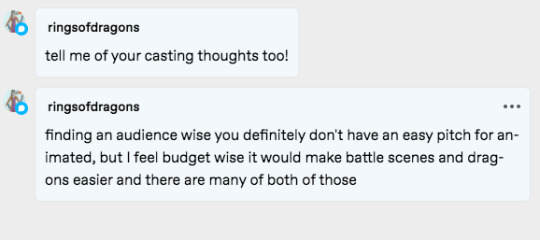
So I started making a list of british actors for varied parts. A lot of it is variable, as most of Temeraire is a bunch of Uptight British Gentlemen types, and England makes those in Bulk.
HOWEVER, as I was doing it, the cast list looked very...white. In future books/seasons where they go to other countries, this list is expanded, of course, but still. I thought 'well it is a historical piece, so it is accurate' and then I threw up on myself and came to my senses. It's all made up anyway, and Naomi Novik herself came up with a plausible reason to have women lead characters. I could do the same!
I still do want Will Laurence to be played by a white man, specifically this one:

Charlie Hunnam, of Pacific Rim and King Arthur fame. The Perfect Twunk British guy who's all strong looking, but could play both the Very Proper (Awkward) British Gentleman, as well as a fun loving dragon dad, and a feral warrior captain. He's our fish out of water character, so it makes sense he's as close to our idea of old timey british man as we can get.
NOW THOUGH: The aviators in this series are canonically lower staffed as it's hard to find people unafraid of dragons, plus they're a bit looser with the rules: as long as they get people on the dragons, they dont much care who they are, and dragons certainly don't give a damn about racism. Therefore, I think *historically* it would make sense as a career for a Freedman, or a Freedman's son, who may not have many prospects.
Enter John Granby:

THATS RIGHT ITS A PACIFIC RIM REUNION
Canonically, John Granby is lower-class, and was sent to the Aviators at age 7 because his family couldn't feed him. This contributes to how bitter he is about Laurence, a gentlemen, just GETTING an uber rare dragon egg with no work, basically. Changing his race doesn't really change his backstory, and in fact enhances the tension with Laurence: We imagine he has had to have worked 4 times as hard as everyone around him to get half as much. Plus, John Boyega can do the physical comedy amazingly once he gets his own dragon (spoilers) who is a fireball.
Harcourt and Berkley can go a number of ways, though I favor Rose Leslie for Harcourt because pretty and feisty red head. Though Bonnie Wright may also work. I have Timothy Spell for Berkley, but again, I just need an overweight british man, I think I can find one.
For Jane Roland though:

ITS CERSEI'S TURN FOR A DRAGON, BITCH!
But honestly it's her role in Imagine Me and You (great lesbian film if you're looking) that sets her as the crass but firm leader that Jane Roland needs. Plus, look at her, she could definitely Dom Laurence.
(though if we're opening this up to American Actors, she may have to fight for the role with Charlize Theron....)
For the dragons voice acting, I would like a Chinese-British voice for Temeraire, seeing as he's a Chinese Dragon raised British. You could bring forward some great british voice actors like John Rhys Davies and even, I'll say it, Benedict Cumberbatch. Say what you want, he has a good voice. Also Tom Holland for Levitas. Saying a brittle "You Came!" to his Captain as he dies, in the same tone as Spider-man's "I don't feel so good..." Ugh, I'm gutted thinking about it.
I want to throw Riz Ahmed in there somewhere. Maybe for Keynes, the Dragon Doctor? I can't pin it down, but he feels right for this series. I'd like a few British Indian's among the cast, considering the time period.
for season 2 I think Chow Yun-fat for Prince Yonxiang, Benedict Wong for sympathetic Sun Kai, and Gemma Chan as voice of Lien, the "evil" dragon. In Season 3, we need someone mixed Chinese and Caucasian for Tharkay, and I think Andy Serkis to do voice for the Feral Dragon Leader Arkady. Oh! And change Gong Su the chef to a woman. If you really want historical accuracy, maybe she came with her husband who died (there was another chef who disappeared on the journey). we just need more women of color in here. Maybe one on Temeraire's crew? Hm.
So yeah. I mean, it's not like a lot of them are set in stone, but I'm happy with a few of these choices to the point I can see it clearly in my mind.
#Temeraire#casting thoughts#i just#please put me in charge of this show#HAND OVER THE RIGHTS PETER JACKSON#YOURE NOT USING THEM YOU MADE THE HOBBIT INSTEAD
60 notes
·
View notes
Photo

Benedict Cumberbatch on Playing Thomas Edison in “The Current War”
(source) photos: Dean Rogers
Competition breeds innovation. History is full of rivals who, by working against one another, continuously pushing to be better, have inadvertently contributed to the greater good. Apple versus Microsoft is one such example, paving the way for computing as we know it today. There’s Elon Musk’s SpaceX versus Jeff Bezos’ Blue Origin – the modern day space race. However, few rivalries have changed the world as much as the War of Currents. It was a battle of entrepreneurial titans, of AC versus DC, of George Westinghouse versus Thomas Edison. Now, Benedict Cumberbatch and Michael Shannon are bringing the story to the big screen.
Now, with The Current War, the story of this famous rivalry is coming to the big screen. The Sorcerer Supreme himself, Benedict Cumberbatch, explores the very real kind of magic in Thomas Edison’s use of electricity, while the versatile Michael Shannon plays successful businessman and entrepreneur George Westinghouse. Slated to release on October 25, 2019, The Current War explores this famous rivalry of the two titans of electricity. We had the opportunity to discuss with Cumberbatch the various aspects of his character and this historic conflict.
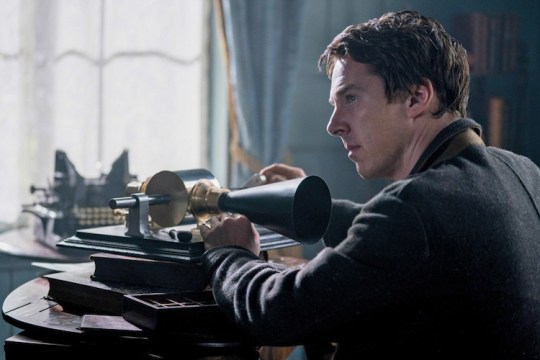
Innovation & Tech Today: What did you do to prepare to play the man who’s been called “America’s Greatest Inventor?”
Benedict Cumberbatch: Well, I read much as I could… There was an excerpt of his diary, which is a little known publication (I think out of print now) that production managed to get a hold of for me. That was a wonderful insight…
I researched into specifics to do with his deafness, to do with the electric current and its distribution. I was speaking to people who know a lot more about these things, including our art department on the film itself in pre-production, who were pretty fantastic. I always find that leaning on some of the experts around you is an incredibly helpful thing to do. Then the book itself that it’s inspired by, [War of the Currents]. It’s an amazing story of three men, three titans of invention.
I&T Today: Did you learn anything about him that the average person might not know?
Benedict Cumberbatch: I guess the regrets or the understanding of what he’d sacrificed with his family, how hard he worked and what cost that had on the intimacy that he had, and lacked, with his family. Not to judge the man, but I think he ended up repeating his mistakes, if they were mistakes. Or is it just his nature? But I think it still tortured him as well as being something he decided to do. That work always came first. That was an interesting thing to explore… He was very fond of coffee. He’d often sleep in the laboratory and work through the night.
He was very fond of his men, he treated them honestly and truthfully and, at times, harshly, but there was a lot of celebratory machismo and backslapping, and it was a proper communal work environment in Menlo Park. That’s the first blueprint for the research and development departments we now have in a lot of industries in the Silicon Valley. There was a lot of comradery and I think there were certain pressure points in this race for the control of the current where he probably didn’t behave at his best. There’s a human element to that. It’s not all just good natured thigh slapping. There was a lot of hard work and a lot of spilled milk.
How ferocious a reader he was, I didn’t know. I don’t know how general knowledge that is about him, but it’s gobsmacking. I mean volumes of literature all the time. He never stopped reading. A lot of the diaries, accounts of passages, fiction, as well as a lot of history, and of course science and nonfiction actual works. He’s extraordinary. He writes about books as mood enhancers as well, how they transport him. He writes about his daydreams and his dreams, and however racy they get. He touches upon a fantasy life as well. He’s just very funny, and takes great delight in the brilliance of other people as well.
I&T Today: The Current War is revolved around this rivalry, specifically between Edison and George Westinghouse, played by Michael Shannon. How has it been working with Shannon as your rival, as your opposite?
Benedict Cumberbatch: Well, it’s a bit like the famous scene in Heat where the two rivals operate in such isolated opposition or polarity that they really are arguing two completely different cases. They don’t crossover much, that’s the great thing. Sadly, I only got two instances where Michael and I were on the same set, but obviously one of those is a big scene, a lot like the café scene that’s between De Niro and Pacino.
Michael is an extraordinary actor. I’ve been a huge fan of all of his work, and for a long time. He has such command of characterization, of how to achieve so much with seemingly so little, but inside he’s fearlessly intelligent and very heartfelt.
I&T Today: Edison isn’t the first scientist you’ve played. You’ve also portrayed Alan Turing in The Imitation Game and others. How has this experience compared to that of Alan Turing?
Benedict Cumberbatch: I think Edison obviously has an eccentricity: the workaholic nature, the excessive nature, the competitiveness, and what were rumored to be issues of hygiene because of that. I still think that he operated on a very different plane from the other scientists I’ve portrayed, and Turing in particular. Personality-wise, he’s bombastic, he’s a salesman, he’s confident up front. He’d be as confident in front of a podium as he would be in his workshop. Entertaining and regaling with facts and amusing anecdotes and funny asides. You know he was a very public persona.
Whereas Alan Turing was a very awkward, retiring, quiet, and shy man by comparison. Often, people say “you play lots of scientists.” Yes, but I also play lots of different human beings, and they couldn’t be two more different human beings in my opinion.
Alan was lean and trim, a very competent long-distance runner. And I think Edison would not be a competent long distance runner. He was energetic, but I don’t think it went too far in the direction of cardiovascular workouts.
And the lure for this wasn’t just another scientist, but it was another extraordinary human being. It was tempting, had some aspects that I had never played before. I always try to look for work that gives me something new to think about.
I&T Today: How has playing Edison compared to some of the fictional intellectuals you’ve played? Like Sherlock Holmes or Dr. Strange?
Benedict Cumberbatch: The Wizard of Menlo Park and the Sorcerer Supreme. I think what’s extraordinary about what Edison did was this was magic we’re still living with. I’ve got two, very young, children. And to see the look in their eyes when lights go on and off for the first time, and they really take that in. It’s a very bold and frank reminder of what an extraordinary thing it is. Doing this Promethean thing of lighting unlight with light, and creating daylight, and interrupting circadian rhythms, and bringing convenience to every part of our lives so we can evolve physically and intellectually, in a different way. These are incredibly real things, and to be part of storytelling or a storyteller trying to imagine and envision what that would be like to be at the forefront of that invention is terribly exciting.
I&T Today: As you studied this historic rivalry, do you think there are comparisons to some more modern rivalries? Bill Gates vs. Steve Jobs, for instance?
Benedict Cumberbatch: Of course there are. How can there not be? I think there have been rivalries in all areas in industry. Of course now, a lot of these powerhouses in Silicon Valley, these men, captains of our modern tech industry, Noskin and Jeff Bergin, Gates and Steve Jobs. You know they’ve become as iconic as their products in many ways. And rightfully so. And I think the men and women who are captaining those areas of industry now always acknowledge their debt to people like Westinghouse, Edison, and of course, Tesla.
#benedict cumberbatch#the current war:directors cut#hard working actor works hard#i love his interviews - he prepares so diligently#for all his parts - no wonder he's so well respected for his craft
39 notes
·
View notes
Text
KineMaster Pro is #1 Trending Video Editing App for Andorid. Download KineMaster Pro Now
Kine
Master Pro is #1 Trending Video Editing App for Andorid. Download KineMaster Pro Now
Edit Videos in 4K
Multi-Layer Video Editing
three-D Effects and Transitions
Chroma Key
No Ads.
NO Watermark
All Premium Features Unlocked
KineMaster Pro
APK
is the nice video editing app for Android users to edit the videos on a expert level. Nowadays YouTube, TikTok, Instagram, etc. Are going so fast within the area of video. So KineMaster Pro App is the fine one to edit your videos. The free model has Watermark and now not all ofthe advanced functions present But we’re giving Premium version for FREE. So, here we are providing you with the KineMaster Pro APK for FREE !!Now, if you are looking to
download
the cutting-edge model of KineMaster Pro Apk, then you definately are at the right place. Free version of KineMaster Apk has a lot of troubles like Watermark, Premium functions are lacking and more. But Premium KineMaster Mod Apk is best for YouTubers, TikTokers, Instagram Influencers and has functions like Chroma Key, three-D effects, Multi-Layer Editing, Custom Watermark, etc. So, Download Now KineMaster Pro NowKineMaster Pro
APK
is the nice video editing app for Android users to edit the videos on a expert level. Nowadays YouTube, TikTok, Instagram, etc. Are going so fast within the area of video. So KineMaster Pro App is the fine one to edit your videos. The free model has Watermark and now not all ofthe advanced functions present But we’re giving Premium version for FREE. So, here we are providing you with the KineMaster Pro APK for FREE !!Now, if you are looking to
download
the cutting-edge model of KineMaster Pro Apk, then you definately are at the right place. Free version of KineMaster Apk has a lot of troubles like Watermark, Premium functions are lacking and more. But Premium KineMaster Mod Apk is best for YouTubers, TikTokers, Instagram Influencers and has functions like Chroma Key, three-D effects, Multi-Layer Editing, Custom Watermark, etc. So, Download Now KineMaster Pro Now
Table of Content
Features of KineMaster Pro
Download KineMaster Pro
How to Install KineMaster Pro?
Pro Features of KineMaster Pro Apk
FAQ’s
Chroma Key
It is one of the popular capabilities of this app. Chroma key’s used to exchange the background of the video. It is a truely advanced function, usually, this advanced characteristic is located in
PC
Softwares. By making use of the green screen in the video you may trade your video’s background in any way you want. Marvel films use this approach to edit the movie, it makes yourvideo look more professional by converting the heritage.
for online video school
This function is honestly beneficial for shooting expert motion pictures for youtube so, that you may easily remove the background from your movies and also can exchange it.
Animation
To make your video more appealing it absolutely needs to add some animation effects. So there are a lot of animation results to be had in the KineMaster Pro APK to use animation between the video. You will find more than one animation consequences in save of kinemaster pro apk, you could use these animations at the same time as editing the video and make you video elements in amination. Animating things in the movies is a certainly professional feature that normally PC software can do. But kinemaster offers these tremendous features to you. Also, you
could
down load more effects from the keep.
Multi-Layer
You can add more than one layers in the video like you could upload images, audio, gif, photos, overlays, animations, etc. At the equal time. Add multiple layers makes your video more super because you can able to upload a couple of matters at the equal time. You also can adjust the settings of all the layers like size, timing, etc. Multi layering provides you the freedom to attach files in the video and can display them at the screen without problems like you could upload images, also you can add
videos
at the video.
Live Preview
KineMaster Pro offers you a really first-rate features known as Live Preview that lets in you to look at your movies whilst editing so you can without difficulty take a look at what’s happening the edited video. You effortlessly edit and click on on “Live Preview” then you may able to see edited video LIVE at the screen.
Multi-Track
This feature is just wonderful, you could add up to 8 tracks at the identical time inside the video by using the multi-track characteristic. You will get a studio-like experience at the same time as modifying video. Combine the tracks and you can make high-quality tune for songs and music. This characteristic affords you an first rate environment to make song videos, you will feel like a studio and add tracks and might edit them together.
Voice Recording
Now you don’t have to report audio separately, KineMaster gives you to feature voice-over from the app itself. Just report the voice and apply it within the video. It is really tough to file an audio clip one at a time and fasten it to with the video SO, kinemaster gives you this feature to record audio within the app itself. That’s it !!
No Ads.
As you know that the normal unfastened app of kinemaster shows ads at the same time as enhancing the videos but with the KineMaster Pro there might be no Ads. In all around the app. You can Enjoy the app with none annoying Ads.KineMaster Pro is FREE a loose video editing app. It gives you all the advanced gear and functions. Like a number of the capabilities are sincerely mind-blowing, you can put off the heritage and trade it without difficulty like casting off historical past with the aid of applying inexperienced screen. This feature is understood for the PC but KineMaster has these remarkable functions.
You can add 3-D Transitions results within the video, this allows you to apply three-D effects and the video will appearance cool. It also has Awesome animation results, you could follow animation between the movies and follow animation to make the video greater attractive. Also, it has a whole lot of other features like Chroma Key, Multi-Layer, Transitions, Adding more than one videos, etc. We will explain all the features later on.
APK Name KineMaster Pro APK
Size 75.5MB
Version 4.12 [Latest Version]
Android Required 4.1+
Installs 100,000,000+
Rating 4.4
Developer KineMaster Corporation
Last Updated sixteen March 2020
APK Type KineMaster Pro – Premium Unlocked APK
WHAT’S NEW ?
[New] BeatSync challenge import support (Please set up the BeatSync app!)
Improved text define clearness whilst shadow alternative is enabled
Fixed a computer virus in which a few formats of WAV audio documents were not imported into a task
Fixed a bug where a few shade filters on
Basic
were no longer carried out correctly
Fixed a worm where Transition Effects and Clip Graphics subitems aren’t implemented consequently whilst selected
Other bug fixes
How To Install KineMaster Pro APK:
Installation Process of KineMaster Pro Apk is really smooth and simple, to install it simply follows those few steps given below.
Before putting in the apk, make certain to enable “Unknown Sources” to enable: ->Go to Settings -> Select security option -> Touch on it and enable “Unknown Source”
Now, open the ��Kinemaster Pro” Apk file
Then Click on “Install”.
Wait till the installation method is completed
After, installation is completed.
Now, Open KineMaster Pro Apk
PRO Features of KineMaster Mod Apk:
As we are offering the Pro version of this Apk, so it has quite a few extra and top class features. Here, We supplying the KineMaster Pro Apk for FREE !!!. So, you ought to also recognise the top rate capabilities which you are becoming with the Modded version. We mentioned underneath the top rate capabilities that you will get.
NO Watermark
All the Premium Features !!
4K Video editing
All media formats are supported
NEW Features are unlocked
More top class filters and transitions
Export in any of quality – 1080p, 720p, 480p, etc.
What customers Say About KineMaster Pro
Kelvin Lewis: This app is by some distance the most intuitive video editor I’ve tried. After only a day
gambling
round with it I’m bowled over at how literally whatever appears possible! Thank you a lot to the developers of this. You have make something extremely good and I hope you keep including cool capabilities and possibilities. I went top class today to mention thanks!
Desmond Bonaffini: Great app. Definitely worth getting. Free version may be very good, paid is incredible. Had a mild hassle with exporting but in much less then 24 hours after notifying tech help, the computer virus was fixed and it’s operating a-ok now. five stars for the app and five stars for the tech help as well. Cheers
Kendra Rules: This app is virtually simply so advanced and when you used to it, it’s incredibly smooth to use. I use this to edit videos and make my Daily life content material I like to upload to my
youtube
channel and I actually recommend putting in this. You can use green screens, make intros, edit films, put pictures
Download KineMaster For PC
if you men are locating KineMaster Pro APK for PC, then you can download and Install KineMaster MOD Apk on your PC, You just must follow a few steps, and deploy with the KineMaster Pro the use of emulator. we have detailed guide to put in it on PC. Just click the under button to Download.FAQs
How to Download KineMaster Pro
APK
?
You can Download KineMaster Pro from KineMaster Pro website, also you could anytime visit right here to download it.
Can I edit videos in 4K?
Yes, you can edit videos in 4K without any issue, but make sure that your cellphone also supports 4KIs this the Pro version of KineMaster?
Yes, that is the KineMaster PRO Apk.
What is the advantage of Pro Apk?
You will get greater and greater advanced capabilities compared to free apk
Which is the Latest Version of KineMaster Pro APK?
V4.12 is presently the trendy version – Download (v4.12)How to Download KineMaster Lite Apk?
To Download Lite Apk – Download Kinemaster Lite
Conclusion
So, guys, we have provided you all the records related to KineMaster Pro Apk. You can download the apk from the given links. As you recognize that you may edit motion pictures professionally from the android by using this app also so, you do not worry about that. All the features are defined here. This app has additionally the loose version in the play store however we are here offering you the KineMaster PRO Apk.
Thanks for touring and preserve journeying for New updates.
4 notes
·
View notes
Text
By any reasonable measure, the neoliberal dream lies in tatters. In 2008 poorly regulated financial markets yielded a world-historic financial collapse. One generation, weaned on reveries of home ownership as the coveted badge of economic independence and old-fashioned American striving, has been plunged into foreclosure, bankruptcy, and worse. And a successor generation of aspiring college students is now discovering that their equally toxic student-loan dossiers are condemning them to lifetimes of debt. Both before and after 2008, ours has been an economic order that, largely designed to reward paper speculation and penalize work, produces neither significant job growth nor wages that keep pace with productivity. Meanwhile, the only feints at resurrecting our nation’s crumbling civic life that have gained any traction are putatively market-based reforms in education, transportation, health care, and environmental policy, which have been, reliably as ever, riddled with corruption, fraud, incompetence, and (at best) inefficiency. The Grand Guignol of deregulation continues apace.
In one dismal week this past spring, for example, a virtually unregulated fertilizer facility immolated several blocks of West, Texas, claiming at least fourteen lives (a number that would have been much higher had the junior high school adjoining the site been in session at the time of the explosion), while a shoddily constructed and militantly unregulated complex of textile factories collapsed in Savar, Bangladesh, with a death toll of more than 1,100 workers.
In the face of all this catastrophism, the placid certainties of neoliberal ideology rattle on as though nothing has happened. Remarkably, our governing elites have decided to greet a moment of existential reckoning for most of their guiding dogmas by incanting with redoubled force the basic catechism of the neoliberal faith: reduced government spending, full privatization of social goods formerly administered by the public sphere, and a socialization of risk for the upper class. When the jobs economy ground to a functional halt, our leadership class first adopted an anemic stimulus plan, and then embarked on a death spiral of austerity-minded bids to decommission government spending at the very moment it was most urgently required—measures seemingly designed to undo whatever prospective gains the stimulus might have yielded. It’s a bit as though the board of directors of the Fukushima nuclear facility in the tsunami-ravaged Japanese interior decided to go on a reactor-building spree on a floodplain, or on the lip of an active volcano.
So now, five years into a crippling economic downturn without even the conceptual framework for a genuine, broad-based, jobs-driven recovery shored up by boosts in federal spending and public services, the public legacy of these times appears to be a long series of metaphoric euphemisms for brain-locked policy inertia: the debt ceiling, the fiscal cliff, the sequestration, the shutdown, the grand bargain. Laid side by side, all these coinages bring to mind the claustrophobic imagery of a kidnapping montage from a noir gangster film—and it is, indeed, no great exaggeration to say that the imaginative heart of our public life is now hostage to a grinding, miniaturizing agenda of neoliberal market idolatry. As our pundit class has tirelessly flogged the non-dramas surrounding the official government’s non-confrontations over the degree and depth of the inevitable brokered deal to bring yet more austerity to the flailing American economy, we civilian observers can be forgiven for suspecting that there is, in fact, no “there” there. For all their sound and fury, these set-tos proceed from the same basic premises on both sides, and produce the same outcome: studied retreat from any sense of official economic accountability for, well, anything.
...You’d think that our recent bruising encounters with the devastating fallout from the deregulators’ handiwork in the housing market of the early aughts should, by rights, render Friedman’s complaints about the public sector’s assaults on market virtue the deadest of dead letters. But, if anything, the ritual defense of the market’s sovereign prerogative has dug in that much more intractably as its basic coordinates have been discredited. As critics such as Dean Baker routinely point out, the stalled recovery out of the Great Recession is almost exclusively a function of the failure of our neoliberal economic establishment to speak honestly about a collapsed housing bubble that created a yawning shortfall in demand—a shortfall that, amid the paralysis of credit markets in the same recession, could be jumpstarted only by government stimulus.
All sorts of absurdities have flowed from this magisterial breakdown in comprehension. Since the neoliberal catechism holds that stimulative government spending can never be justified in the long run, much of our debate over the recovery’s prospective course has been given over to speculative nonsense. Chief among these talismanic invocations of free-market faith is the great question of how to placate the jittery job creators. At virtually every turn in the course of debate over how steeply to cut government spending in this recession, our sachems of neoliberal orthodoxy have insisted that any revenue-enhancing move the government so much as contemplated would spook business leaders into mothballing plans to expand operations and add jobs. It became the all-purpose worst-case scenario of first resort. If health care reform passed, if federal deficits expanded, or if marginal tax rates were permitted to rise for the vapors-prone investor class, why, then the whole prospect of a broad-based economic recovery was as good as shot.[*]
And since neoliberalism is most notably a global—or properly speaking, the globalizing—ideology, such pat distortions of economic reality are no longer confined to the Anglo-American political economy. Nor are they confined to strictly cognitive errors in policymaking. The collapse of the Rana Plaza garment factory in Bangladesh has yielded commentary from neoliberals that might well merit entry into the psychiatric profession’s DSM-5 as textbook illustrations of moral aphasia. Here, after all, was a tragedy that would appall even the darkest Victorian imaginings of a Charles Dickens or a Karl Marx: factory workers earning a monthly wage of $38 crowded into a structurally unsound multistory facility built on a foundation of sand above a drained pond. Three stories of the factory had been hastily erected on top of an already unsound existing structure just to house the fresh battalions of underpaid workers demanded by bottom-feeding international textile contractors.
Government inspectors repeatedly demanded that the facility be shuttered on safety grounds, but the plant’s proprietors ignored their citations, reckoning that the short-term gains of maintaining peak production outweighed the negligible threat of a fine or safety citation. Nor was there likely to be any pressure from Western bastions of enlightenment and human rights. The ceremonial stream of Astroturf labor-and-safety-inspecting delegations from Western nations made zero note of the cracked and teetering foundations of the Rana Plaza structure. Lorenz Berzau, the managing director of one such industry consortium (the Business Social Compliance Initiative), primly told the Wall Street Journal that the group isn’t an engineering concern—and what’s more, “it’s very important not to expect too much from the social audit” that his group and other Western overseers conduct on production facilities. And, as Dave Jamieson and Emran Hossain reported in the Huffington Post, labor organizers have long since learned that the auditing groups serve largely as pro forma conduits of impression management for consumer markets in the West. The auditing of manufacturing facilities in the developing world “ends up catering more to the brands involved than the workers toiling on the line,” Jamieson and Hossain write.
Yes, factory owners and managers well understand the permissible bounds of discourse in such Potemkin-style inquiries—and instruct their workforce accordingly. “What to say to the auditors always comes from the owners,” a Bangladeshi line worker named Suruj Miah told the two reporters. “The owners in most cases would warn workers not to say negative things about the factories. Workers are left without a choice.” Sumi Abedin, one of the survivors of an earlier disaster—a factory fire in the nearby Tazreen plant that claimed the lives of 112 workers in November 2012—told the Huffington Post that on the day of an international audit team’s visit, management compelled workers to wear T-shirts designating them as members of a nonexistent fire safety committee, and had them brandishing prop fire-extinguishing equipment that plant managers had procured only for the duration of the audit.
What this disaster ought to have driven through the neoliberal consensus’s collective solar plexus is something close to the polar opposite of its cherished, evidence-proof theory of the captive regulator: a largely cosmetic global watchdog effort funded overwhelmingly by private-sector concerns, far from delivering oversight and accountability, has incentivized fraud and negligence. And conveniently enough, it’s the race-to-the-bottom competitive forces unleashed by the global workplace that ritually sanctify all of this routine dishonesty. In their malignant neglect of worker safety measures, local factory managers are able to cite the same market pressures to maximize production and profit that have prevented the ornamental Western groups conducting audits of workplace safety practices from releasing their findings to the workers at risk of being killed by the neoliberal regime of global manufacturing.
Still, the dogmas of neoliberal market prerogative are far sturdier than a collapsing factory or a raging fire on the production line. If the dogmatists have thrown overboard Hayek-era intellectual values like experimentation and skepticism, at least they can stave off their inevitable extinction by shoring up Friedman-era platitudes and, from the mantles of the nation’s most prestigious universities and op-ed shops, try to pass them off as the nation’s highest common sense. So former University of Chicago law professor Richard Epstein, who helped found the influential law and economics movement that essentially transposed the shibboleths of public choice theory into legal doctrine, has patiently explained that the just and measured response to the collapse of Rana Plaza is to seek enforcement of preexisting building codes across the Bangladeshi private sector. Writing on the heels of the disaster, in the Hoover Institution’s web journal, Defining Ideas, Epstein takes pains to rule out the passage of any “new laws” to improve worker-safety standards or international monitoring efforts.In other words: Bangladeshi workers can either be more safe or starve more rapidly.But lest even this minimal recourse to regulation sound like too heady a plunge into statist remedies, Professor Epstein also cautions that the aggrieved and grieving workers in the Bangladeshi garment trade must not veer recklessly into unionism or other non-market-approved modes of worker self-determination. After all, he reasons, “in order to stave a shutdown off by improving factory safety, the savvy firm will have to raise its asking price from foreign purchasers . . . and may have to lower wages to remain competitive.” (This is another classic myth of the neoliberal faith—the rational “trade-off” between personal safety and wages that the independent broker makes when he or she contracts with an employer to freely exchange time and skills for wages. Only, of course, the notion of such rational choice has been reduced to a bitter farce in workplaces such as Rana Plaza, where the basic human rights of workers are only acknowledged theatrically, for the purposes of Potemkin auditing tours.) A more activist approach to the crisis in global worker safety would create intolerable distress to Epstein’s utopian vision of the carefully calibrated relations of global market production. Sure, the EU might ban exports of clothes bearing the taint of labor exploitation—but such a measure would just perversely create “undeserved economic protection” for EU economies that are net clothing exporters (and by implication, would deprive consumers of the sacred right to the cheapest possible attire that bullied and undercompensated labor can provide).
Neoliberalism, the Revolution in Reverse
9 notes
·
View notes
Text
The year that almost never was...

I know what you’re thinking. How on earth do you do a “best of 2020” movie list when a) there were very few movies to review, and b) it’s not possible to use the word “best” to describe 2020.
Both very valid points. But the way I look at it, is in a year where change was thrust upon us, it might be nice for a little bit of normalcy. And normalcy is the key here. Because in an “unprecedented” year, when so many of us have been forced to “pivot”, this movie list will be doing no such thing.
Sure, I could have changed up the plan by including direct to steaming movies in this year’s list. But as a fan of cinema and the actual experience of going to a movie theatre, I decided to keep the list as it has been in years past, only taking into consideration the new release movies I saw in cinemas, including those designed for streaming services but had a limited cinema release nonetheless (i.e., The Prom).
Of course, this does mean that several of the movies that likely would have made it onto this list such as Disney-Pixar’s phenomenal Soul, the latest live action remake of an animated classic Mulan, and the quirky and brilliant Palm Springs, will not feature. Which is a shame, because two of these would have likely shaken up the top three spots (hint: the awful Mulan adaptation would not be anywhere near the top of the list). But the decision to release these films direct to streaming has such excluded them from this list. As much like Ross’s sofa, I refuse to “pivot”, particularly when cinema releases for these movies were possible in Australia given most theatres only closed for approximately 3-4 months. Either way, I am sure the studios must be devastated over this exclusion. It will be up there with the delay/cancellation of the Academy Awards in terms of disappointment for them, I bet.
But enough about that. Let’s get to the movies – all 17 of them. Talk about depressing.
Even with only 17 films though, there were some shining lights – and one unmitigated disaster. On the positive front, of the far fewer films released in 2020, the overall quality was, well, quite good. In fact, almost all were at least entertaining enough to keep this humble reviewer transfixed for a couple of hours. Some surprises included the Clea DuVall directed Christmas flick, Happiest Season; the Judd Apatow dramedy The King of Staten Island; and the Ryan Murphy Netflix produced movie musical, The Prom. The latter providing a glossy, polished, and amicable adaptation of the Broadway musical it was based on in-spite of its mediocre lead cast (honestly, James Corden and Meryl Streep really need to stop being cast in every movie musical ever made).
At the top of the list however were three films that could not be further removed from one another if they tried (actually, two of them do share one very notable theme, but that’s about where the similarities end).
In third place, was the latest adaptation of Louisa May Alcott’s literary classic, Little Women. Greta Gerwig’s adaptation brought a renewed and timely retelling of this all too familiar tale via an extraordinary cast led by the brilliant Saoirse Ronan and a cleverly rearranged order of events. In doing so, Gerwig managed to bring to the forefront some of the timelier themes and storylines to make this well-told story fresh again. Which in and of itself is no easy accomplishment.
In second place was Taika Waititi’s charming, original, joyous, and heartbreaking story of acceptance in even the darkest of settings, JoJo Rabbit. This bold attempt to combine drama, comedy, coming-of-age romance, as well as a billion other themes into a satirical war film could only be conceived, and more importantly, executed successfully, by the deft hands and mind of the brilliant Taika Waititi. Like many of Waititi’s films, the characters are the real standouts here. They are charming, colourful, and quirky, and juxtapose the dark storyline and historical setting so perfectly, that it somehow makes sense to be shocked and disarmed in one moment, and then in fits of giggles the next. This really was an extraordinary film that deserved every accolade it received.
But it was another war epic that pipped JoJo Rabbit to the number one spot. Sam Mendes visually stunning, utterly mesmerising and ferociously intense 1917 rocketed to my number one spot when I saw it in January. I’m not normally a fan of war epics – and I’m even less a fan of movies that focus on visuals and fancy schmancy in your face direction over storytelling – but in 1917, Mendes used these techniques to actually enhance the story and create well-rounded characters and a level of suspense I’ve not encountered in a cinema since 2019′s Hotel Mumbai. Maybe I’m a sucker for suspense (who knew?), because much like Hotel Mumbai, this well crafted suspense was more than enough to earn this film my number one spot of 2020. I guess it truly was an unprecedented year after all.
And let’s leave it at that. Normally I’d go on to explain some of the weaker entries from the year that was, but let’s just say the less said about The New Mutants, the better.
So, like much of 2020, let’s close the book on it quickly and hope that 2021 brings with it not just a return to cinemas in general, but that the long-anticipated string of movies delayed from 2020 live up to an extra year of hype and anticipation.
To be honest though, who really cares? Just get me back to cinema escapism and away from streaming movies – stat.

0 notes
Text
Film Diary (July 12, 2020 - Dec 28, 2020)
JULY
July 12, 2020: KNIVES OUT (Dir. Rian Johnson)
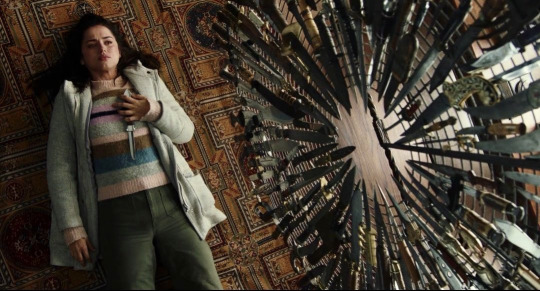
We get to see Rian Johnson finely tune his craft in real time, and I find it exciting. I’ve been on a binge of his work as-of-late and a recurring theme of most of his movies is them being a commentary on themselves or the genres they’re working within. I think this movie nails that trick on the head without patting itself on the back too much. The ensemble cast is expertly chosen and works together really well, and you can tell just by watching it that they were having fun on set. The cast is grounded by Ana de Armas’ quietly brilliant performance. My favorite Rian Johnson movie is still reserved for Star Wars: The Last Jedi, but I do think this is his best work so far.
July 13, 2020: MERMAIDS (Dir. Richard Benjamin)

A slightly more absurd version of Lady Bird, if Lady Bird was made in the nineties. A good addition to the strained-but-loving mother-daughter relationship cinematic universe.
July 15, 2020: THE UNTOUCHABLES (Dir. Brian De Palma)

This is actually the first mafia movie I’ve ever seen, and honestly...it was probably a bad one to start with. Although it was entertaining and tense at all the right moments, the whole thing just felt empty. Every character seemed half-baked and none of them really had any development. De Palma could’ve gone grittier for an R-rating and made his interpretation of Al Capone a little less cartoonish; Kevin Costner’s Eliot Ness was doing the absolute least, and Robert De Niro’s Al Capone was doing the absolute most.
July 31, 2020: (500) DAYS OF SUMMER (Dir. Marc Webb)
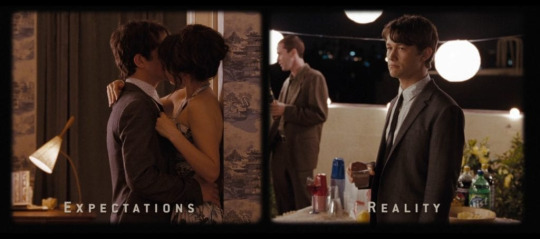
For some reason I have unintentionally seen almost all of Marc Webb’s filmography, and I have to say that I’m underwhelmed by all of it. While watching I found myself reflexively comparing this to Webb’s The Amazing Spiderman and maybe it ruined my viewing experience a little bit. Both of them have lots of super mumbly, drawn-out conversations and an interpretation of an “indie” style that just seems...bland to me. (Also, both of them have pale women with bangs and men with undiagnosed depression.) I don’t know, I just feel like if you want a rom-com with a realistic depiction of romantic relationships, you should just go watch The Big Sick.
AUGUST
August 14, 2020: LATE NIGHT (Dir. Nisha Ganatra)
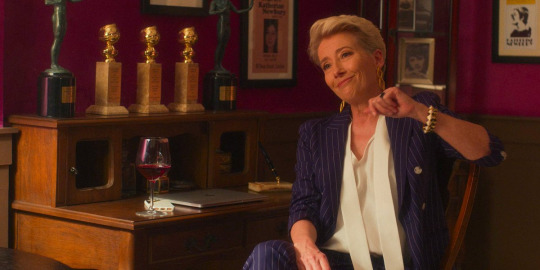
Emma Thompson was great in this, and I think Mindy Kaling is very underrated as a writer (in some ways, I think she is the modern Nora Ephron). I’ve seen quite a few reviews claiming that this movie plays along with conventions, but I don’t necessarily think that conventions are inherently bad as long as they’re executed well. In this case, they were.
August 22, 2020: THE FAREWELL (Dir. Lulu Wang)
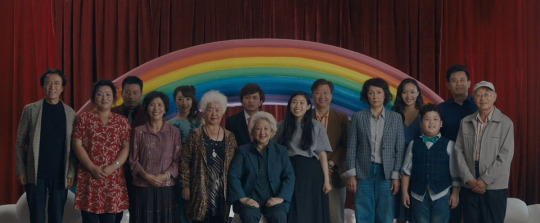
I’d classify this as a really good movie that just didn’t click with me. It was a complete, “it’s not them, it’s me,” situation. It was smartly directed with a focused, sharp script and an excellent leading performance from Awkwafina - I can see why people were upset that it got snubbed at the Oscars - but it just wasn’t my thing. The only time I really connected with it emotionally was the ending.
August 22, 2020: KNOCK DOWN THE HOUSE (Dir. Rachel Lears)
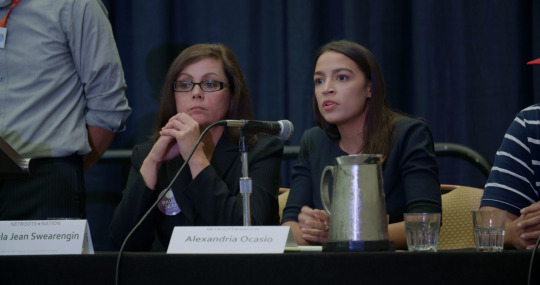
The only piece of media currently in existence that somehow makes me feel a sense of patriotism for this hellscape of a country.
SEPTEMBER
September 5, 2020: BARRY (Dir. Vikram Gandhi)
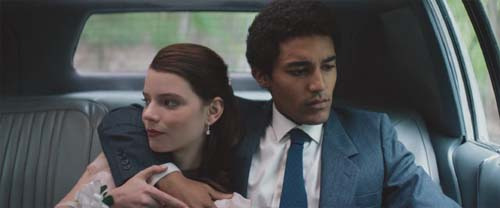
Speaking of living in a hellscape of a country, I have mixed feelings about the Obama presidency - but this movie isn’t about his presidency. It isn’t indicative that he’ll be president at any point. It’s essentially a piece of historical fiction about race and American identity that happens to use Barack Obama as its protagonist. You could replace him with any other dude with a background similar to his and it still would’ve been interesting.
September 8, 2020: UNICORN STORE (Dir. Brie Larson)
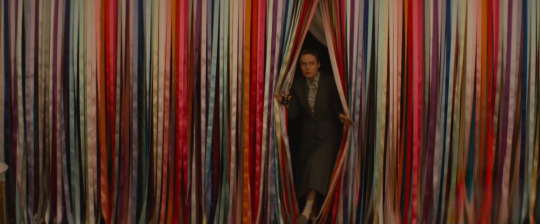
If there’s one word to describe this movie, I’d say, it’s cute. Not in a patronizing type of way, but in a this-movie-feels-like-a-warm-hug type of way. I like this Brie Larson vehicle much more than Captain Marvel, mainly because I feel like she’s having more fun in this and she gets to wear more colors and Samuel L. Jackson has tinsel in his hair and also there’s a unicorn in it. I’m a simple girl with simple needs. I also think Samuel L. Jackson should be adorned in tinsel in every film he’s in without explanation (I might actually watch Pulp Fiction if Jackson’s character had a sparkly afro in it). This movie also made me stan Mamoudou Athie - I think he plays a good straight man and I hope that they don’t waste him in Jurassic World: Dominion, although I’m not getting my hopes up.
September 11, 2020: LADY BIRD (Dir. Greta Gerwig)

I waited a criminally long amount of time to finally watch this. I can’t really say anything about this movie that hasn’t already been said. It’s good! It’s genuine and sweet and I liked seeing Timothée Chalamet play a pretentious asshole.
September 12, 2020: THE BROTHERS BLOOM (Dir. Rian Johnson)
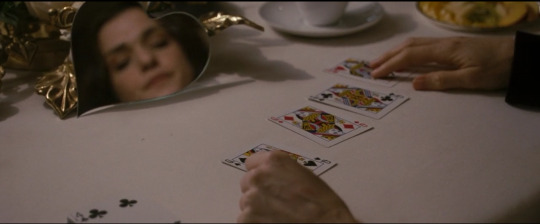
Upon a rewatch, I’m taking my original score of 3.5 out of 5 and bumping it up to a 4 out of 5. Adrian Brody and Rachel Weisz’s performances pretty much make this movie with their earnestness and chemistry. I think you could qualify this film as a romantic dramedy that just happens to be about an international con job. It doesn’t do the greatest job of explaining itself plot-wise, but it makes up for it with stylish direction and a charming cast.
September 18, 2020: EVER AFTER (Dir. Andy Tennant)

The best Cinderella adaptation currently in existence (next to Nickelodeon’s Rags starring Keke Palmer, of course). It’s so good that I’m willing to forgive Drew Barrymore’s attempt at a British accent. I also think this is one of the few movies that could be a decent remake if you gave it to the right director.
September 19, 2020: BRICK (Dir. Rian Johnson)
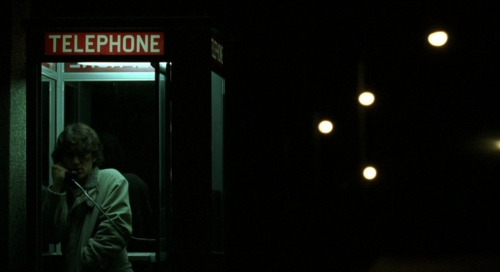
I love Rian Johnson, I think we’ve established that already, but I kind of sort of hated his film debut. It seemed so caught up in its own concept that it ended up seeming like a shell of a movie with no theme to ground it. Sometimes I don’t care if movie has no theme if it’s entertaining, but this movie was not entertaining, so...
September 25, 2020: ABOUT LAST NIGHT... (Dir. Edward Zwick)

Alternate title: Toxic Man is Horrible to a Woman Who Literally Does Nothing Wrong Ever and Also is Gorgeous, They Break Up, Toxic Man Gets a Different Job and Toxicity is Gone Now, Like His Personality was Sifted Through a Brita Water Filter, then the Toxic Man Gets an Unearned Happy Ending with Gorgeous Woman. It might be a little bit long, but at least people would know what they were in for. Still better than (500) Days of Summer, although every male character in About Last Night... deserves to be in jail. All of Demi Moore’s sweaters get five stars.
OCTOBER
October 3, 2020: ENOLA HOLMES (Dir. Harry Bradbeer)

During the first draft of this post, I gave this movie a pretty good review. Then I rewatched it, and...huh. It’s not exactly a bad movie, it’s just an aggressively average movie. Enola Holmes would have benefited from a) a shorter runtime, b) a better mystery, and c) a weirder style. I think that if the character is going to repeatedly talk into the camera, which is kinda weird, you should just make everything else weird too. Give it a Birds of Prey-esque unreliable narrator and non-linear storyline. It’s still a fun movie, and the inevitable sequels have potential, but it just felt like they could’ve - I don’t know - made more of an effort?
October 10, 2020: HUNT FOR THE WILDERPEOPLE (Dir. Taika Waititi)
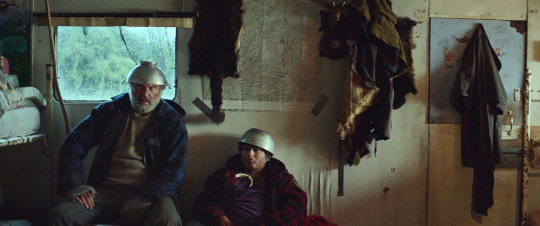
This is the first Taika Waititi movie I’ve seen besides Thor: Ragnarok. I liked seeing how his style transferred into Ragnarok, and it probably has the funniest funeral scene ever written (do yourself a favor and look it up on YouTube). Hunt for the Wilderpeople knows when to make a joke without getting too goofy, and it knows when to be sentimental without getting too sappy. It also has dozens of glorious one-liners.
October 11, 2020: LITTLE WOMEN (Dir. Greta Gerwig)
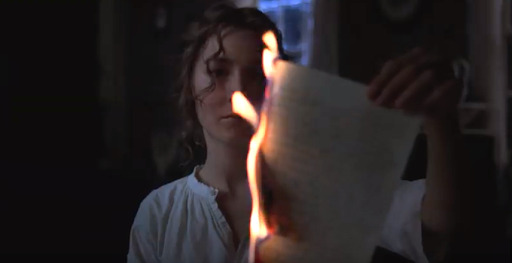
The best Little Women adaptation. (I haven’t seen the one with Katharine Hepburn but I’m just going to assume that this one’s better.) This movie was clearly made for people who know and love the story, which can be a good thing and a bad thing - it means that it took some creative liberties that enhanced the story and added subversions that made it feel meta in a satisfying way. But it also meant that it could be potentially confusing for people who aren’t familiar with the story. Personally I wasn’t lost, but I think Gerwig could’ve used some more visual cues to let you know when they were in the present or when they were diving into the past. I wouldn’t want her to eliminate the jumping back and forth, though, because I think it allowed the characters to be explored a lot more than a linear story would’ve allowed. Gerwig also did a great job of letting you understand the motivations of the supporting characters - specifically Amy - in a way that prior adaptations never really did. Every character felt like their own person instead of accessories to Jo’s life.
October 16, 2020: THE TRIAL OF THE CHICAGO 7 (Dir. Aaron Sorkin)
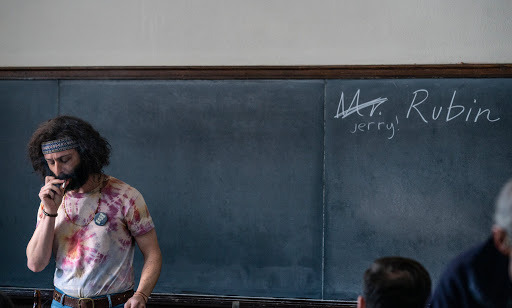
Siegel, a very good Letterboxd reviewer that I follow, said it better than I can: “Aaron Sorkin is way too good a writer to be forced to work with such a mediocre director as Aaron Sorkin”. I didn’t mind the beginning - I thought the quick editing, upbeat music, and cuts back and forth between historical footage and fictionalized scenes were engaging, but the ending was clunky and didn’t fit the tone of the rest of the film. The Trial of the Chicago 7 was a little confused politically and wanted to desperately cling onto a centrism that didn’t let the film fully embrace the anger that it could’ve ended on. Despite all of these things, I still thoroughly enjoyed it. The performances were all excellent, and if any of them get nominated for an Oscar it’s well-deserved. I’m also a sucker for Aaron Sorkin’s speechy, tangential dialogue. It makes me feel smart whenever I listen to it.
October 20, 2020: HALLOWEENTOWN (Dir. Duwayne Dunham)
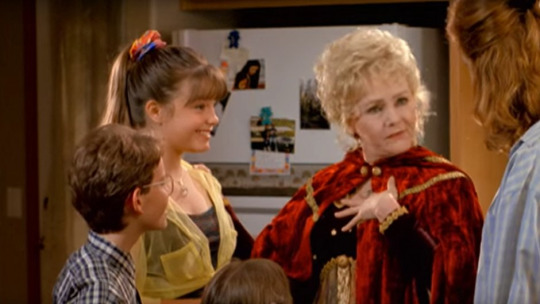
This movie does it for the girls and the gays, that’s it.
October 26, 2020: BIRDS OF PREY (AND THE FANTABULOUS EMANCIPATION OF ONE HARLEY QUINN) (Dir. Cathy Yan)
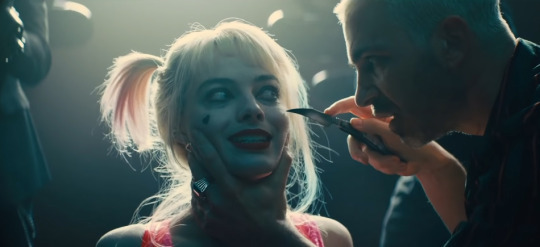
This movie also does it for the girls and the gays, that’s it. Seriously, I honestly don’t know why people don’t love this movie. Margot Robbie’s performance as Harley Quinn is Oscar-worthy. That’s not a joke. I actually think that if the Oscars knew how to have fun, she would get a nomination. She is this character. It feels so lived-in and she never does too much - and with a role like Harley Quinn, it would be very easy to do too much. I also have to give props to the type of feminism that director Cathy Yan inserted into this film. I really enjoyed Wonder Woman and didn’t mind Captain Marvel, but there was something so formulaic and studio-approved about the female empowerment in both of those films. Birds of Prey, however, didn’t really give a single fuck. It was a nuanced, violent, funny as hell story about flawed women forming alliances and finding meaningful relationships in a world that actively abuses them and ugh, I love this movie. It’s probably my personal favorite of the year.
October 27, 2020: DOLLY PARTON: HERE I AM (Dir. Francis Whately)
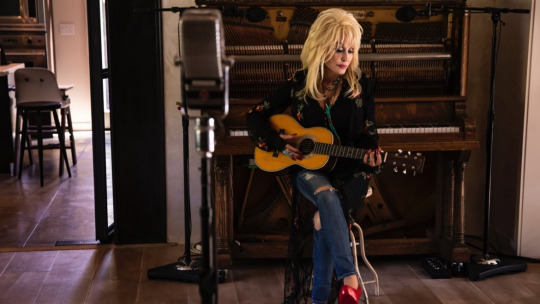
This documentary was strangely edited and offered pretty surface-level information presented in an uninteresting way. I enjoyed myself while I was watching it, but I just wish it would’ve gone deeper. Dolly Parton is one of the most interesting figures in music history, and there was a lot more they could’ve explored.
NOVEMBER
November 1, 2020: ATTACK THE BLOCK (Dir. Joe Cornish)
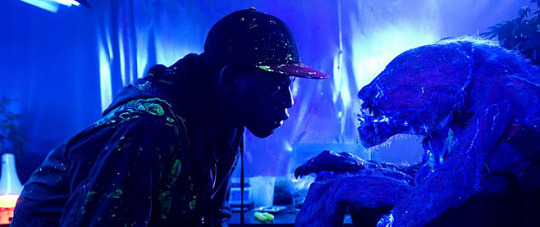
This 82-minute movie gave John Boyega a more satisfactory arc than the almost seven hour long Star Wars sequel trilogy. Seriously, this movie fucking slaps! It hit all the right notes at all the right moments. I honestly think that a lot of sci-fi movies would be better if they worked with smaller budgets and shorter runtimes. Something about working within limitations makes a film feel more authentic and cuts out a lot of the excess fat. This movie is funny and earnest and surprisingly has a lot to say about the world we live in, with a budget that’s 200 million dollars less and a runtime that's 45 minutes less than a lot of sci-fi movies out there.
November 18, 2020: A PRINCESS FOR CHRISTMAS (Dir. Michael Damian)
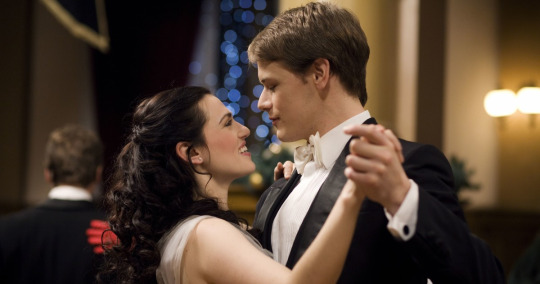
*Lady Gaga voice* Amazing, show-stopping, spectacular, never the same, totally unique, completely-not-ever-been-done-before... My go-to shitty Hallmark Christmas movie every year :)
November 19, 2020: THE LEGO STAR WARS HOLIDAY SPECIAL (Dir. Ken Cunningham)
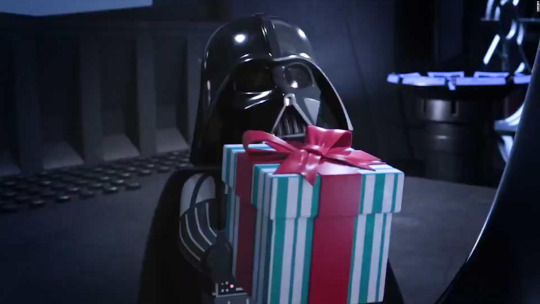
I’m giving this a five-star rating completely unironically. This movie uses the mechanism of time travel better than Avengers: Endgame.
November 20, 2020: THE CHRISTMAS CHRONICLES (Dir. Clay Kaytis)
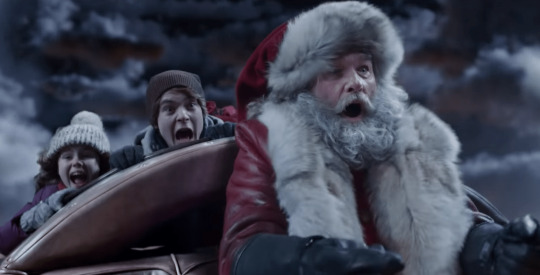
There’s a scene where Kurt Russel does a musical number in a jail cell and then Winston from “New Girl” quits his job as a cop. What more could you want from a Christmas movie?
November 21, 2020: INSIDE LLEWYN DAVIS (Dir. Joel & Ethan Coen)

What was originally intended to be an Oscar Isaac thirst watch turned into what might end up being one of my favorite movies of all time. It’s one of those movies where it’s hard to articulate why it was so good, it was just good, but for the sake of this post I’ll try my best. Oscar Isaac was phenomenal in this - and I’m not just saying that because I’m a simp. His performance, combined with the script, made you root for his character even if he was a douchebag a lot of the time. The movie did a great job of blurring the line between what Llewyn Davis brought on himself and what was the result of just really, really bad luck. The use of sound in Llewyn Davis is excellent, too. Instead of using an instrumental score to emphasize emotion, they used sounds from the character’s environment, which really let the occasional musical moments pop - whenever anyone started singing, it almost felt cathartic. The Coen Brothers also provided moments of levity with perfectly-timed comedic moments throughout. It’s one of those movies where at the end of it, you’re kind of jealous that someone could make something that good. The fact that Oscar Isaac didn’t even get an Oscar nomination for this is - not to be dramatic - a fucking war crime.
November 22, 2020: STAR WARS: THE LAST JEDI (Dir. Rian Johnson)
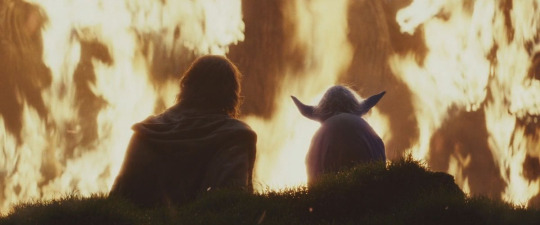
Listen, I know The Last Jedi is such a hotly debated movie that it’s almost political, but it happens to be my favorite movie of all time. Like, number one. It even beats A Princess for Christmas. I’ve had my fair share of slander for loving this movie so damn much, but I will defend it until the day I die, and then I will have my tombstone engraved with “Luke Skywalker’s portrayal in this movie makes sense, you guys are just poisoned by nostalgia.” I’ve seen this movie several times, but I actually haven’t given it a rewatch since The Rise of Skywalker came out last December, and it still holds up. There’s a couple of things that I really appreciated a bit more this time around: every shot in this movie seems so intentional and emotionally charged. Pause it at any point and you’re going to have something interesting and aesthetically pleasing to look at. I really enjoyed the dialogue, too. In most of his movies, Rian Johnson makes his characters talk in a slightly heightened (or in Brick's case, very heightened) way, and it lends well to the Star Wars universe. I'm never going to to not gush about this film. The Last Jedi is the movie that made me love movies, and for that I will always be grateful.
November 25, 2020: HAPPIEST SEASON (Dir. Clea DuVall)
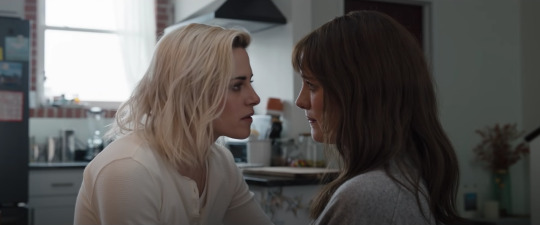
I have similar feelings toward this movie as I did toward Crazy Rich Asians; it follows most of the conventions that populate the rom-com genre, but for the marginalized people the movie is representing, it’s actually pretty fresh. Hot take, but I don’t think that Kristen Stewart’s character should’ve ended up with Aubrey Plaza’s character - I just think the film could’ve done a better job of empathizing with Mackenzie Davis’s character. If we focused on her perspective a bit more, maybe she would’ve seemed less...shitty and distant. I’d also appreciate it if we just stop doing the Gay Best Friend Trope after this movie because - let’s be honest with ourselves - no one’s going to be able to top Daniel Levy’s rendition of it.
November 29, 2020: MANGROVE (Dir. Steve McQueen)

See my Mangrove review here.
DECEMBER
December 5, 2020: RED, WHITE AND BLUE (Dir. Steve McQueen)

I may need to give this a rewatch at some point, mainly because it seems like I didn’t fully grasp the themes it was conveying due to my own skepticisms going into it. Here’s my original review.
December 13, 2020: THE PROM (Dir. Ryan Murphy)

I really can’t critically engage with this movie because my brain just turns off the minute the first song starts. Most of the criticisms you’ve heard are valid - though perhaps a little bit blown out of proportion - but it’s so much damn fun. I’ve watched it twice now.
December 19, 2020: MA RAINEY’S BLACK BOTTOM (Dir. George C. Wolfe)
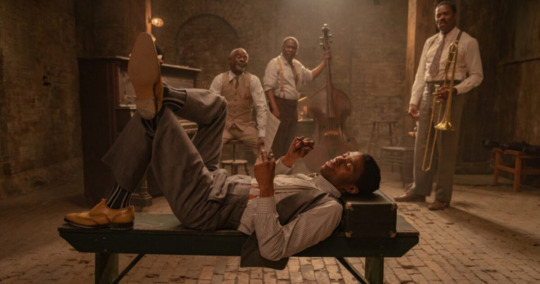
Chadwick Boseman’s last performance is haunting, transformative, and magnetic. The same can be said about Viola Davis’ performance, which is a surprise to no one, but this is really Chadwick’s vehicle. I just wish the directing was as interesting as the acting. This film was adapted from an August Wilson play, and directorially it was treated like a play, which doesn’t necessarily translate that well to film. The space around the actors wasn’t really utilized, and the way it was shot was pretty lackluster and static; oftentimes, the only interesting thing to look at in a scene was an actor’s performance. Maybe I’ve just been a little obsessed with Steve McQueen’s directing style lately, but this movie probably would’ve been five stars for me (instead of the four-and-a-half I gave it) if it was directed by him.
December 19, 2020: LONG TOAST (Dir. Karsten Runquist)
youtube
Fuck yeah, Karsten Runquist! Shout out to his monthly “what I watched in [insert month]” videos for giving me the inspiration to write this.
December 23, 2020: LET IT SNOW (Dir. Luke Snellin)

Weirdly enough, this may be one of my favorite Christmas movies. There’s nothing all that remarkable about it, but it has a sweet, simple holiday vibe with innocent performances and low stakes. I don’t really ask a lot for Christmas movies, and this pretty much delivers.
December 25, 2020: THE PSYCHOLOGY OF DREAM ANALYSIS (Dir. Rian Johnson)

This short film from Rian Johnson is the earliest thing I could find of his filmography on Letterboxd, and it was a pretty engaging watch. It was essentially all of Johnson’s quirks as a director condensed into ten minutes. It reminded me of those trippy short stories you had to read in middle school.
December 26, 2020: PLUS ONE (Dir. Jeff Chan & Andrew Rhymer)
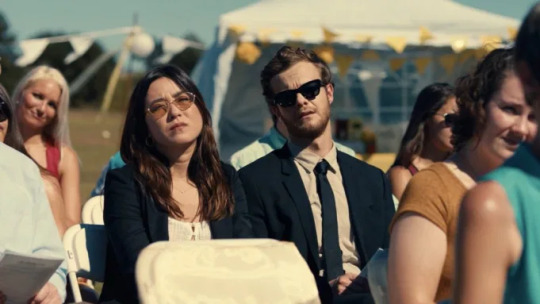
I’ve seen a lot of rom-coms - like, an ungodly amount - and my love-hate affair with this genre has made me realize that predictability isn’t the issue with rom-coms (a lot of genres are very, very predictable). The issue is a lack of authenticity. Yes, this film is predictable, but it’s authentic. The humor in this movie actually feels like something that would happen in real life, not something heavily contrived or exaggerated for the sake of entertainment. I don’t have anything against the contrived and exaggerated, but it’s refreshing to see comedy being delivered so naturally in this genre. Plus One also has a more realistic (but still sweet) perspective on love and relationships which you don’t normally see in any genre.
December 27, 2020: THE HALF OF IT (Dir. Alice Wu)
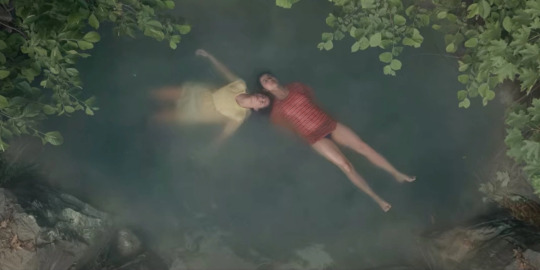
I watched this at the beginning of the year and didn’t enjoy it all that much - partly because I was in the closet and aaaah girls kissing aaaaaah - and partly because I just thought it was boring. On a second viewing, I really appreciated it more. I think it’s the smartest and most well-shot movie directed toward teens that I’ve seen on Netflix. Although the script can be a bit pretentious, it’s directed in a way that doesn’t feel like it’s either trying to be too indie or like an hour and fourty-five minute long single-camera sitcom episode. The character of Ellie is also a really interesting and nuanced character, and a good example of how to write and portray queerness on screen.
December 27, 2020: TAYLOR SWIFT - FOLKLORE: THE LONG POND STUDIO SESSIONS (Dir. Taylor Swift)
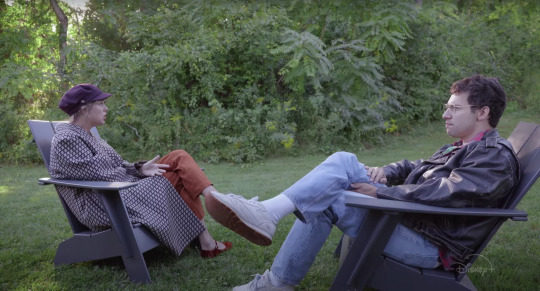
I would die for Taylor Swift and/or Jack Antonoff.
December 28, 2020: MANK (Dir. David Fincher)

I went into this movie as a) someone who has never seen a David Fincher film, and b) someone who has never seen Citizen Kane. Unsurprisingly, Mank was definitely not my thing. That doesn’t mean I didn’t appreciate it. It’s a fucking good-looking movie. But it’s kind of like the himbo of movies - it’s nice to look at, but there’s not much going on underneath. I’m hearing this complaint from a lot of people: it’s a technical masterpiece, but it feels pretty damn hollow. Personally, it’s not enough for me to recognize that a film looks and sounds good - I have to care about and know the human beings within it in order for me to think that it’s a good movie. To me, a film is only as good as the emotional relevance of its story, but sadly emotional relevance is where Mank falls short.
What movies kept you sane during 2020? Let me know!
0 notes
Photo

New Post has been published on https://www.stl.news/steve-mcqueens-1968-bullitt-movie-mustang-revealed-north-american-international-auto-show/67541/
Steve McQueen's 1968 Bullitt Movie Mustang Revealed At The North American International Auto Show
Forty-year secret — single-family ownership since 1974
The twenty-first car added to the National Historic Vehicle Register
Historic Vehicle Association documentary in production for release in 2018
WASHINGTON DC/January 14, 2018 (STL.News) – Today, the Historic Vehicle Association (HVA) announced that the 1968 Mustang Fastback, serial #8R02S125559 from the movie Bullitt (1968) was recorded as the twenty-first automobile on the National Historic Vehicle Register.
This program is a partnership between the HVA and U.S. Department of the Interior, Historic American Engineering Record and the archives of the Library of Congress. Sean Kiernan of Nashville, Tennessee is the owner of the “Bullitt” car. It was revealed to the public along with the new Ford Mustang Bullitt at the North American International Auto Show in Detroit in celebration of the 50th anniversary of the iconic movie.
The Real Deal
The movie Bullitt was the first film produced for Warner Brothers by Steve McQueen’s Solar Productions. Actor Steve McQueen, known for his love of motorcycles and fast cars, was hell-bent on bringing real action to the screen. He and Director Peter Yates succeeded with a visceral cop action flick set in San Francisco. The action was all real in Bullitt. Real speeds, real streets, with real crashes caught on film. The Kiernan’s ‘559 Mustang was the “hero car” used for many of McQueen’s close-up scenes. A second car (serial #8R02S125558) ‘558 Mustang was the “jump car” and was modified for many of the film’s stunt scenes.
The eleven-minute chase scene was the film’s core and forever changed Hollywood film-making.
youtube
National Historic Vehicle Register
“The 1968 Ford Mustang Fastback (“Bullitt”) is associated with one of the most epic stars in film history and an automotive chase scene that helped propel McQueen to perpetual stardom. This was the moment when McQueen became “the king of cool.” It was the first movie he created on his own and had all the signature qualities for which he aspired. He played an understated cop, fighting the good fight, against all odds. What he needed was a car to complete his image to enhance his persona. The 1968 Ford Mustang Fastback was just that car,” said Mark Gessler, President of the Historic Vehicle Association.
“From our vantage point it is among the most important automotive artifacts of the twentieth century. It has the incredible combination of Hollywood royalty and decades of an honest family’s ownership and the secret that engulfed its mystery. As it is revealed today, it marks a moment on this 50th anniversary for America to look back at a time when McQueen and a 1968 Mustang Fastback could captivate popular culture.”
The HVA’s historic documentation program of the 1968 Ford Mustang Fastback (“Bullitt”) has been underwritten in part through the generous support of Ford Motor Company, Hagerty, Shell, Pennzoil, LKQ Corporation, American Fuel and Petrochemical Manufacturers, and The NB Center for American Automotive Heritage.
Owner Sean Kiernan tells the story as follows:
“For 44 years, our family has owned the Bullitt movie Mustang – serial number ‘559. There were two Bullitt movie cars. The ‘558 car was the heavily damaged “jump car” which was recently discovered in Mexico. Our ‘559 “hero car” was the vehicle that McQueen drove in many of the movie scenes.
For decades, our car has been the subject of numerous rumors, myths and dead-end searches. These stories evolved and took on a life of their own and the car became something of a holy grail in the old car world – waiting to be rediscovered.
Today we revealed the car to the general public and it is pretty much the way my parents bought it back in 1974. They found it in a classified ad from the October 1974 issue of Road & Track. The ad was slightly misspelled and read: “1968 Bullett Mustang driven by McQueen in the movie. Can be documented. Best offer.”
According to the New Jersey detective selling the car, my father – Robert Kiernan – was the only person that ever called. We’re not exactly sure how much dad paid but it was around six grand. It was quite a bit of money back then for a used ’68 Mustang Fastback. In fact, it was about twice to four times the going-rate.
My mom (Robbie Kiernan) and dad were both just 26 years old. They had been married for five years and my sister Kelly was four years old. They lived in Madison, New Jersey about 25 miles from New York City.
Bullitt wasn’t a second car – it was their only car. Dad took the train every day to the World Trade Center where he worked in insurance. Mom drove Bullitt to St. Vincent’s parish where she taught third grade. The car was never modified – it has a straight exhaust and shook the pavement. God only knows what those kids must have thought. Mom must have been pretty cool.
On weekends, it was the family car and was driven to Maine and upstate New York numerous times. It must have been deafening. There was no sound-proofing because it had been removed for the movie. The trunk had a huge cut-out for a smoke machine. When it rained, I have no idea how the luggage stayed dry. We recently discovered the rear seatbelts hidden with Gaffer’s Tape. I guess my sister Kelly was never buckled in. Dad installed a pair of speakers in the back that are still there. With no air-conditioning, windows rolled down and the blaring AM radio, those Bullitt road trips in the 1970s must have been thrilling.
In 1977 my dad got a call from Steve McQueen. Steve had tracked down the prior owner, who gave him our phone number. McQueen wanted the car. He was a guy that was not used to hearing the word “no.” But my dad told him: “no thanks, we are not interested in selling.” McQueen followed up with a letter reiterating his interest, saying he wanted the car back and offered a trade or something as long as it wasn’t “too much monies.” Dad never answered that letter. Bullitt was part of our family.
By the time it was parked our family had put 46,000 miles on the car.
I was born in 1981 – about the last time the Bullitt moved under its own power. Dad was an executive and had a company car. Mom was driving something more practical – a Plymouth Horizon – and I had a seat belt.
Dad was always a car guy but by the 1980s another passion bit him. It was horses. Fast cars were moved to the sideline in favor of thoroughbreds. By the time we moved to our Kentucky farm outside of Cincinnati, we had a number of horses. Ultimately, the farm became a full-time job for all of us.
I grew up loving horses and cars alike. We always had something cool to drive. Eventually I learned the story about our Bullitt Mustang. It was a car I would come to know well. While I’d never heard its cylinders fire, I pretended to drive it thousands of miles. I would hop in the seat, grab the steering wheel and run through the gears. I honestly have no idea how that Hurst shifter ever survived my daily abuse.
After Steve McQueen passed, hunting for the Bullitt Mustang intensified. While the car was decidedly not for sale, it simply became a project dad didn’t have time for. Gradually, it became our family secret out of necessity. Dad was now a busy executive with horse racing business interests, but he took quiet pride knowing the Bullitt was waiting in the garage.
By 1995 we moved to a house on a smaller farm near Nashville. A few years later dad retired and started scaling back.
I took a job in automotive refinishing. By the late 1990s my father and I started to talk about rebuilding Bullitt. We became further inspired when, in 2001, Ford launched its first anniversary Mustang Bullitt which stirred up more talk of the whereabouts of our original car.
Dad started disassembly of the car in our modest two-car garage. Unfortunately, we still had a farm that took most of our time.
When our father-son project finally started to gain momentum, illness struck – my father was diagnosed with Parkinson’s disease. For the next couple of years, we could talk about cars, but not accomplish much. In 2014, he passed away. It became a father-son project we were never able to finish together.
Over the past two years, I’ve worked alone in that same garage to return Bullitt to the condition it was when it was my parent’s daily driver. The engine was rebuilt, aging carpets were replaced, and a new steering wheel added similar to the one used in the movie. Aside from that it is pretty much the way it was, with the evidence of our family road miles, and the gentle patina that comes from years of storage.
The paint has never been changed. Some wish it was shinier. It never was. In the movie, all the badges were removed and the paint was scoured with Scotch-Brite pads to make it dull. After the movie, it received a generous application of Bondo (to hide the damage), and a single-stage respray in its signature Highland Green color.
The seats, interior, trunk space and camera mounts remain unaltered and consistent with its prior movie life. When originally prepared for resale, the antenna was returned to the right front fender and the movie rear-view mirror was replaced with a stock unit. The Hurst shifter had been installed by the former owner and we never replaced it.
The front bumper is new and so is the front valance. These were damaged when my grandfather backed into the car in the 1970’s. No artificial “patina” has been added – all the new parts can be plainly identified. The car is honest and that’s the way I wanted it.
The workmanship is all mine, as it was mine to do alone as homage to my father and the family secret I had internalized.
Over the last 18 months, several experts were brought in to see the car. Mustang expert Kevin Marti was the first and he verified our Mustang as the ‘559 Bullitt movie car. McKeel Hagerty was contacted, as Hagerty insures the car.
We were then connected with the Historic Vehicle Association in Washington, D.C. for guidance on preserving the car and the related artifacts. They photographed, scanned and documented the car for the National Historic Vehicle Register, in partnership with the U.S. Department of the Interior, Historic American Engineering Record.
We can all be grateful that these documents will be archived in the Library of Congress so that future generations of Americans can see the car, just as it is today. Our family is honored that it is the twenty-first vehicle to be recorded under the program and the subject of an HVA documentary that they will release later in 2018. I know my dad would be proud.
We contacted Ford early on, as that had been my father’s wish. Together with the HVA, we decided the best time to reveal the car would be today to commemorate both the 50th anniversary of the year the car was produced, and the 50th anniversary of the Bullitt movie.
I am grateful to my wife Samantha and my good friends Steve Forister, Steven Whitaker, Casey Wallace and Ken Horstman, because without their encouragement and support the car would not be here today. I’m also grateful to LKQ Corporation (where I’ve been employed for ten years) for flexibility in 2018 to tour with the car.
I thank my dad, Robert Kiernan, for the years we shared together, my sister Kelly and my mom, Robbie Kiernan. She must be the coolest third grade teacher in history, because she drove the Bullitt Mustang – our family car and a true national treasure.”
Features: extra cooling package, GT equipment group, optional axle ratio, wide oval white sidewall nylon tires, power disc brakes, AM radio, interior décor group, deluxe seat belts, remote control left hand mirror and heavy-duty battery.
The actual build date was January 8, 1968. It was sold on March 11, 1968.
– The above information courtesy of Ford Motor Company and Kevin Marti, Marti Auto Works.
Both the ‘558 and ‘559 cars shared identical build specifications. Upon purchase, the cars were prepared by Max Balchowsky for the use in the Bullitt movie. These modifications included: Borg-Warner T-10 heavy- duty four-speed manual transmission, heavy- duty Borg-Warner clutch, 390 ci engine built by Balchowsky, milled heads, carburetor and distributor modification, 4:10 Positraction rear end, heavy-duty universal joints, 5-ton motor mounts, reinforced shock mounts, cross beam support bar, Helwig stabilizers front and rear, Koni shocks, heavy-duty coil springs, frame reinforcements, American Racing mag wheels, Dunlop 5:00 M-15 racing tires on the front, 5:75×10:40 15 Firestone GP Indy Tires on the rear, custom exhaust and a Shelby-type steering wheel.
All exterior Ford and Mustang badging was removed. The Highland Green paint was scuffed to create a dull appearance. Certain features were painted black, such as the rear gas cap. The reverse lights were removed.
After filming, the “Bullitt” car was repaired and painted (Highland Green) for resale.
HVA Documentary and Tour
The HVA is producing a feature length documentary, entitled Little Pieces; The Untold Story of the Bullitt Mustang, about the ‘559 “Bullitt” Mustang to be released in 2018. The film will feature exclusive interviews with the Kiernan family, as well as many other people connected with “Bullitt,” in a definitive telling of the beloved car’s entire mysterious life.
A national tour of the ‘559 “Bullitt” Mustang is also being organized by the HVA and will be announced in the near future.
About the Historic Vehicle Association
The HVA is dedicated to preserving and sharing America’s automotive heritage. In 2014, the HVA established the National Historic Vehicle Register in partnership with the U.S. Department of the Interior, Heritage Documentation Programs and Library of Congress to document historically significant automobiles in America’s past. The HVA is supported by over 400,000 individual historic vehicle owners, key stakeholders, corporations and benefactors. Please visit: historicvehicle.org
About Shell Lubricants
The term ‘Shell Lubricants’ collectively refers to the companies of Royal Dutch Shell plc that are engaged in the lubricants business. Shell Lubricants companies lead the lubricants industry, supplying more than 11 percent of global lubricants volume.* The companies manufacture and blend products for use in consumer, heavy industrial and commercial transport applications. The Shell Lubricants portfolio of top-quality brands includes Pennzoil®, Quaker State®, FormulaShell®, Shell TELLUS®, Shell RIMULA®, Shell ROTELLA® T, Shell SPIRAX® and Jiffy Lube®. http://www.shell.com/
*Kline & Company, “Global Lubricants Industry November 2017: Market Analysis and Assessment.”
BULLITT and all related characters and elements © and ™ Warner Bros Entertainment Inc. (s18)
____
SOURCE: news provided by Historic Vehicle Association, distributed by PR Newswire, published on STL.News by St. Louis Media, LLC (MS)
0 notes
Text
New Post has been published on Titos London
#Blog New Post has been published on http://www.titoslondon.in/padmavati-style-file-a-sneak-peek-into-ranveer-singh-shahid-kapoors-warrior-armours/
‘Padmavati’ style file: A sneak peek into Ranveer Singh, Shahid Kapoor’s warrior armours
By: Lifestyle Desk | New Delhi | Updated: October 27, 2017 10:45 pm Design house The V Renaissance designed costumes for Shahid Kapoor and Ranveer Singh. (Source: File Photo) Related News
Jab We Met is this generation’s DDLJ and we’re still waiting for the next rom-com that follows its lead
10 years of Jab We Met: What happened to Geet and Aditya after Mauja Hi Mauja? Here’s what Imtiaz Ali reveals
Jab We Met director Imtiaz Ali: Even after a decade, people love its simplicity
Ranveer Singh and Shahid Kapoor are all set to show their royal side as warriors in Sanjay Leela Bhansali’s ‘Padmavati’. The first set of posters have left movie buffs spellbound and they can’t wait to catch the first day, first show and honestly, we don’t blame them from the frenzied craze. The trailer looks spectacular with the magnificent fortresses, the gorgeous costumes and the extravagance. In fact, even the battle scene – with the two men clad in warrior costumes – looks brilliant.
It’s evident that just like any other Bhansali project, a lot of thought and hard work has gone behind the making of the film and doing their bit is designer duo Vipul Amar and Harsheen Arora. The founder of the Delhi-based design house ‘The V Renaissance’ combined their forces to create the warrior looks of Shahid Kapoor, who plays the Rajput ruler of Mewar, Rana Rawal Ratan Singh, and Ranveer Singh, who essays the role of Allauddin Khilji in the movie.
Shedding light on how they first got on with the designs, Amar revealed, “They first approached us to create one look for Ranveer Singh’s earlier battles in the film and then, they also asked us to create the armour for Shahid Kapoor’s final battle. After Mr Bhansali saw these armours he loved them so much that he then asked us to create one for Khilji’s final battle as well.” In fact, the armour for the final battle was revealed to them on Bhansali’s birthday and going by his reaction, it was the ideal birthday surprise for him.
The duo consulted an engineer to confirm the robotics incorporated in the armours. “Authenticity and mobility of the armours was our prime concern as it is imperative that the actor is able to perform stunts in them. Hence, we carried out thorough research on the armouries and weaponries of the era around which the film revolves. We employed actual historical techniques to create the armours such as cuirboilli technique, sculpting, chiselling, inlaying to name a few, while making sure they align with today’s standards of comfort and weightlessness,” Amar added.
Ratan Singh is an embodiment of love and patriotism while Allaudin Khilji embodies conquest and invasion. Interestingly, even though the same materials have been used in their armours, they have been treated differently to depict their opposing personalities. Both the characters are so strong and contrasting that the challenges while designing for both cannot be compared. The techniques used in armours for both of them vary drastically.
Revealing how the styling techniques for both of them vary, Arora said, “Once I was able to get into the psyche of Maharawal Ratan Singh it helped in bringing elements to his armour that represent nobility and honour. Even the colours used for Shahid’s armour show just that. The blood red depicts honour, love, and eagerness to serve one’s land and the deep gold stands for courage, generosity and passion.” Not only that, the design elements in Shahid Kapoor’s armour are inspired by the sun rays and the chest-plate is coloured like the Rajputana soil at different times of the day.
On the other hand, Allaudin Khilji’s armour represents the Sultan that he envisioned himself as. “The leather lions on his shoulders show his strong-headedness. The lions have been chiselled and hammered to bring into form – as part of the technique which is also symbolic to Khilji’s conquest. Also, the darkness of the character has been enhanced by engraving reptile scales on the lion heads,” she said.
When not in use, the armours rest on life-sized mannequins, which are then placed inside vintage closet trunks. These are no ordinary trunks since they are fitted with lights and wheels for easy transport when the armies are moving in caravans before settling at base camp. All this helps transport the actor psychologically into that time and era.
It’s not the first time the designer duo have provided their services for a film. Sushant Singh Rajput’s warrior look in ‘Raabta’, was also designed by them.
Video of the day
For all the latest Lifestyle News, download Indian Express App
© IE Online Media Services Pvt Ltd More Related News
Padmavati row: Vaghela asks Bhansali to show film to Kshatriya community before release
Padmavati song Ghoomar: Deepika Padukone stuns, makes you believe that she is indeed Rani Padmini. Watch video
Tags:
padmavati
Ranveer Singh
Shahid Kapoor
0 notes
Link
Image © Olympus America
Background
I love camera gear. No shame in that, as there has always been a love affair with technology. Today, lets explore the world of the Olympus PEN-F and see what makes it special, where it is deficient, and my general thoughts about it.
Handling/Weight/Size
The PEN-F is a rangefinder styled camera. The OMD series is more like the SLR style. One of the physical characteristics that sets this camera apart from the other PEN cameras is the built in electronic viewfinder. It is not in the middle, but off to the left top side.
Image © Olympus America
As you can see from the image above, there is a fully articulated screen here. I'm not going to get into the specifics of that in this review, as it seems to be a very polarizing issue. After using an articulating screen for some time now, I can say that I do appreciate the ability to move the rear LCD for different camera angles. While we are viewing the back of the camera, you'll notice the right hand side is home to a few function buttons. After a while of use, I am happy to report that the bottom right hand buttons have never been accidentally pressed by me during use. There is a rear wheel as well for controlling camera functions. We'll get into more detail about the dials in a minute when we look at the top of the camera. You'll notice that there are quite a few functions marked on the d-pad. I immediately remapped those and the d-pad is now exclusively used for selecting AF points. The other functions marked on the d-pad I access via the Super Control panel, which is accessed by pressing the "OK" button when in shooting mode. I've mapped the Fn1 button (see top right of the image above) to the "AF home" button. I find that the controls and layout feel very natural.
Image © Olympus America
The top gives us a look at the other controls. One the mode dial you get the aperture/shutter/manual/program modes, iAuto and movie mode. What is different from other Olympus cameras up until the PEN-F is the inclusion of custom mode slots for 4 different setups. The mode dial also has a clickable lock/unlock button on it to prevent accidental shifting. The shutter release button is surrounded by the front control dial and that black dot you see is for a threaded cable release. Next to that is the movie record button. It is also surrounded by a hard ridge to prevent accidentally activating the movie mode. A dedicated exposure compensation dial is also featured to the far right. The detents on it are very rigid, so you will not be bumping this around accidentally. The power switch is set to the left and looks much like a dial. Very quick to go from off to on and back with the left hand. The PEN-F does not have a grip on the front and a very small indentation on the back. Some people don't like that, so there are Olympus and third party add on grip options to give your front fingers something to grip on to. I don't mind it, but I do throw on a small wrist strap just for a little added security. The PEN-F takes to adapted and manual focus lenses quite well. I've used it with many Nikon F-mount lenses to native mount manual lenses. Focus peaking works great. I set peaking to yellow color with low intensity. I then map the peaking function to the front "DOF preview" button.
1/2500, f/3.2, ISO 200 Olympus 75mm f/1.8
Below, I'll share with you the setup I shoot with on an everyday basis The everyday mode for single point AF stuff. Sharpness -1 Contrast +1 S-AF i-Natural picture profile Single Servo 4:3 aspect ratio Large SuperFine JPG The settings I use for the MONO section on the front dial: mono profile 1 monochrome color = none film grain effect = off Sharpness -1 Contrast +1 S-AF Single Servo 1:1 aspect ratio color filter = none highlight curve -4 shadow curve -3 midtone curve -3 vignette = 0 Large SuperFine JPG + RAW(so I have the ability to get a color version if I so desire) Much easier to access than going into a menu and picking a MySet or remapping existing dial options. While we are on the subject of MySets - those are technically gone. Instead, you map the C1 through C3 dials; menu options for setting and retrieving are a lot less confusing. The menu names have been renamed, so you know when you are saving the settings or retrieving them. You still cannot name the presets, but that is less of an issue since they have their own dedicated place on the dial.
1/125, f/4, ISO 1000 - Nikon 105mm f/2.5 AI Fotodiox adapter
Special PEN-F Feature - The Front Dial
This is the one stand out feature on the PEN-F that has a lot of people talking. The front dial gives you access to some special features for how you want your JPG images to look. MONO - black and white mode, with some presets and a customizable slot for you to setup the output how you like. And when I say customizable, I mean it! You can control all points of the tone curve, add a color filter to change the B&W conversion characteristics, the level of vignetting as well as the amount of grain that gets applied to the file. The exposure features are accessed via a switch on the rear of the camera that sits under the mode dial. The other functions are accessed via the SCP. COLOR - this mode is similar to the MONO mode, but deals in how the color response is handled. Again, just about anything can be customized. You can control the overall color saturation response or isolate it to a specific channel of colors. The tone curve is customizable here as well. ART - your art modes that were historically found on the mode dial. Same here as you'd find on other Olympus cameras. CRT - is the color creator mode that can be found on older Olympus cameras
Some people have mentioned that the front dial digs into their fingers and is uncomfortable. The metal dial does have some texture to it, so I can see where that might be an issue. However, I have large hands and I've never had an issue with rubbing my hand on the dial. I believe this is an issue with how the camera is being held more than anything.
I ran into this issue when I first bough the Nikon Df. Because of the body style and the grip (or lack there of on the PEN-F), you need to hold the camera differently. My thinking is that this different grip style is why I don't have issues with the front dial.
I love having this feature and use the MONO mode with a custom setup quite a bit. When I do, I have the camera setup to shoot SuperFineJPG+RAW, so I get the best of all world.
1/2500, f/4, ISO 200 - Mitakon Speedmaster 25mm f/0.95
Image Quality
The sensor is of the 20mp Sony variety. There is no anti aliasing filter. I'm getting excellent image quality out of this camera. The previous sensors were 16mp, so not much of a boost. However, if you look at what you are getting, which is more mp with a boost in IQ, low light performance and dynamic range - you are getting something better. I've honestly had very little issues with the IQ I got from the older Panasonic/Sony 16mp sensors - so I'm happy. So long as we keep moving forward, no matter how little and not backward.
1/1600, f/2.8, ISO 200 - Olympus 25mm f/1.8
1/400, f/9, ISO 200 - Panasonic 12-32mm f/3.5-5.6
Auto Focus
Point to point single AF is where this camera is most powerful. It is quick and fast, everything that you've come to expect and appreciate from the Olympus brand m43 cameras. You get large and small single points as well as some group points. I'm shooting with single point small AF. Continuous AF. Yeah....if you've done any homework and looked at the Olympus C-AF, you'll already be aware that the contrast detect only cameras are not very well regarded. If you need tracking, you'll want to get an EM1 Mark I or Mark II that have sensors with PDAF.
My Dog Ren 1/40, f/2.5, ISO 6400 - Nikon 105mm f/2.5 AI Fotodiox adapter
Battery Life
What you'd expect from the BLN-1 battery. You can find the standards, which I think list it around 350 shots per charge. In real life use, you will get more than that if you exercise good mirrorless camera power management. Keep the camera off until you need it. Don't chimp unless you need to. Have the EVF power off after a few seconds. Those kinds of things will help tremendously.
1/320, f/4, ISO 200 - Nikon 105mm f/2.5 AI Fotodiox adapter
Video
Nothing really special here. An adequate 1080p offering from Olympus. Having the IBIS is nice, but to be honest, the video is here for the spec sheet as I'm guessing that most who want the PEN-F are not getting it for the video features. There is also no audio input for external microphones, so if that is something you need, use an eternal recorder and sync in post. Good for grabbing the occasional family videos, but if you want to do something more serious in the m43 ecosystem in video, look to the Olympus OMD EM5.2 or EM1.2 for that. On the Panasonic side, look to the GH4/GH5.
1/100, f/3.5, ISO 250 - Nikon 55mm f/3.5 Micro Fotodiox adapter
Other Misc. Items of Note
Shutter Sound: The shutter sound is quite, plus you get the all electronic shutter modes. Quite is good. Size Comparison: The camera is very thin, candy bar shaped. If you throw a pancake prime or zoom on there you have something that can fit in a jacket pocket. Very portable. I've had people mistake it for a film camera quite a bit, just like the Nikon Df. High Res Mode: Also available here, slightly larger with the newer sensor. 50mp RAW files. You still need to use a tripod with a still subject, but if you have a use case for it, quite a nice feature to have at your disposal.
1/125, f/4, ISO 200 - Mitakon Creator 85mm f/2
Firmware: The big thing with the newer camera technologies is being able to enhance and upgrade the bodies and lenses via firmware updates. While I can see the benefits of this, it can also be a curse. Upgrading from version 1.0 to 1.1 proved to be an uneventful affair. However, upgrading from version 1.1 to 2.0 has proved to be problematic. The camera presents issues with the EVF/LCD going black and the camera locking up. The only way of resolving this is to pull the battery and reinsert. Olympus acknowledged this and issued another firmware some weeks later, but even version 2.1 did not fully resolve the issue. While the frequency of the lockups was reduced, and when it does lock up, the power switch will reset the condition....there is still an issue there. Once this issue is fully resolved, I will update this post with that information at that time. Bottom Line: While this may not be the camera for everyone and the price tag might be off putting - one cannot deny that Olympus has provided a very capable camera body. In many ways this is the mirrorless equivalent to the Nikon Df for me. It just feels right, makes me want to get out and shoot pictures with it. If I did not shoot professionally, I could see me living happily with the Nikon Df and the Olympus PEN-F as my everyday shooters and companions.
1/200, f/8, ISO 200 - Olympus 9-18mm f/4-5.6 - hi-res mode
There is just something very bonding about a camera with actual dials and performance that lets you shoot and think about subject and composition versus technical details. This is how I felt about the Fuji X system when I had it years ago. I'm just glad to see that the camera companies are listening and providing cameras like this. I understand that this is not the direction they want to go, but there is a market out there for this kind of camera.
0 notes
Text
Sans Soleil
To sum all of what I’m going to say, I will start with saying that this documentary was definitely not for me. Nothing about Marker’s style interested me, nor left me wanting to keep watching. His sporadic and scatterbrained images, though I realize they are intentionally overwhelming and almost confusing, just seemed to far-fetched and unappealing.
The narration almost put me to sleep, to be honest. That’s not the fault of the narrator, but rather the source material. The letters written seem overly philosophical and come off as trying to hard to seem “artistic” with word choice and overall writing style.
I’m still confused about some of the horribly graphic images sprinkled throughout the film. For example, the scene of what I assume is a decomposing human corpse (I only looked for like 1 second), or the various images of animals in different sexual positions. Images like these were distracting and completely unnecessary.
It may have just been my dwindling attention during the movie, but I honestly can’t tell you what Marker’s overall message to the audience was. The letters mention a lot about the mechanisms of memory, which I guess acts as the overall theme of the film. I understood his sentiment that film can be used as almost a “permanent memory”, not relying on the human tendency to mis-remember events. However, this central theme did not coincide well with the actual images on the screen.
Looking specifically at the time he spends in Japan, I felt some moments of this part of the “documentary” were redeeming. I enjoyed some of the deeper looks in Japanese culture, and portraying the Japanese need for escapism through video games and horror films. Some aspects of that culture are so bleak and repressed that they can only express themselves through media outlets. But the role memory has to play in this is beyond me.
The sounds of the film were equally unsettling as some of the images. The mixture of the diegetic and non-diegetic sounds became overwhelming and at times frightening. I felt very uncomfortable listening to those eerie synths and electronic beats. The music definitely could have added an extra dimension to a film as artistic as this tries to be, but again I just did not enjoy this aspect of the film.
Overall, I wish I could have enjoyed this film more. I can understand the type of crowd this film appeals to, and I just don’t think I fall in that audience. For a documentary, it seemed intentionally fictionalized to me - which may have been Marker’s point.
Response to the Readings
“Montage as Resonance”
I had trouble understanding this reading. From what I gather, the dialectical image are those images that are quick cuts, almost detached from the previous images shown but connected in a way that tells a story. Marker uses this in his past films as well as “Sans Soleil”, and has become a signature style. This style, to me, seems like it would work very well in a historical documentary, as mentioned in the reading. The sporadic imagery can help make the audience create these subconscious connections between events, and evoke the emotions that Marker tries to depict. This method allows Marker to develop a deeper philosophy solely through images, which can work well if the audience is on top of this style. However, I really did not like this method uses in “Sans Soleil”, and it really made the movie more confusing than insightful.
Bazin Readings
“Ontological Images” was a very interesting reading. I enjoyed how Bazin relates the ancient use of preservation of people to the current use of film. The ontology may have dissipated, but the way humans seek to remember the past and create this “idealism” is very real and very intriguing. Photography and film has overtaken painting in terms of realism and the portrayal of psychology - and this may be for the better. Releasing painting from being to “real” allows for abstractions, which can lead to deeper meanings and more interesting imagery, imagery which cannot be truly found in the world. Though, obviously, many prefer film for its realism, painting can now distance itself as a haven for deep thinking and a haven for “new” art, because film is now becoming traditional. Painting will always persevere because of its innately human qualities, its imperfections and process behind it. Though I think current society can obtain more value from film, historical art still holds its own unique value.
In “The Evolution of Images...” Bazin talks more about montage, and the use of disjointed images in juxtaposition to create a meaning. The movement of silent film to the 1930′s relied on the use of a more “somber realism”, most notably in the images used and the use of sound to enhance the film experience. I honestly couldn’t imagine what film would be like without sound, because it just adds so much to the experience. Adding both dramatic and psychological meaning to film, as directors matured, catalyzed the film making process, and created the foundation for the product we have today. I find it interesting how much process really goes into filmmaking - from the sound, to the set pieces, to the makeup, costumes, etc. It is simply not just taking a video and editing it to portray a story. This is art in one of its most complex forms - the sheer amount of depth even one shot of a film has can seem daunting to those not familiar with the process. And, even when film did not have sound, so much went into production. It amazes me how far we’ve come in this medium, and how much further we could go.
0 notes